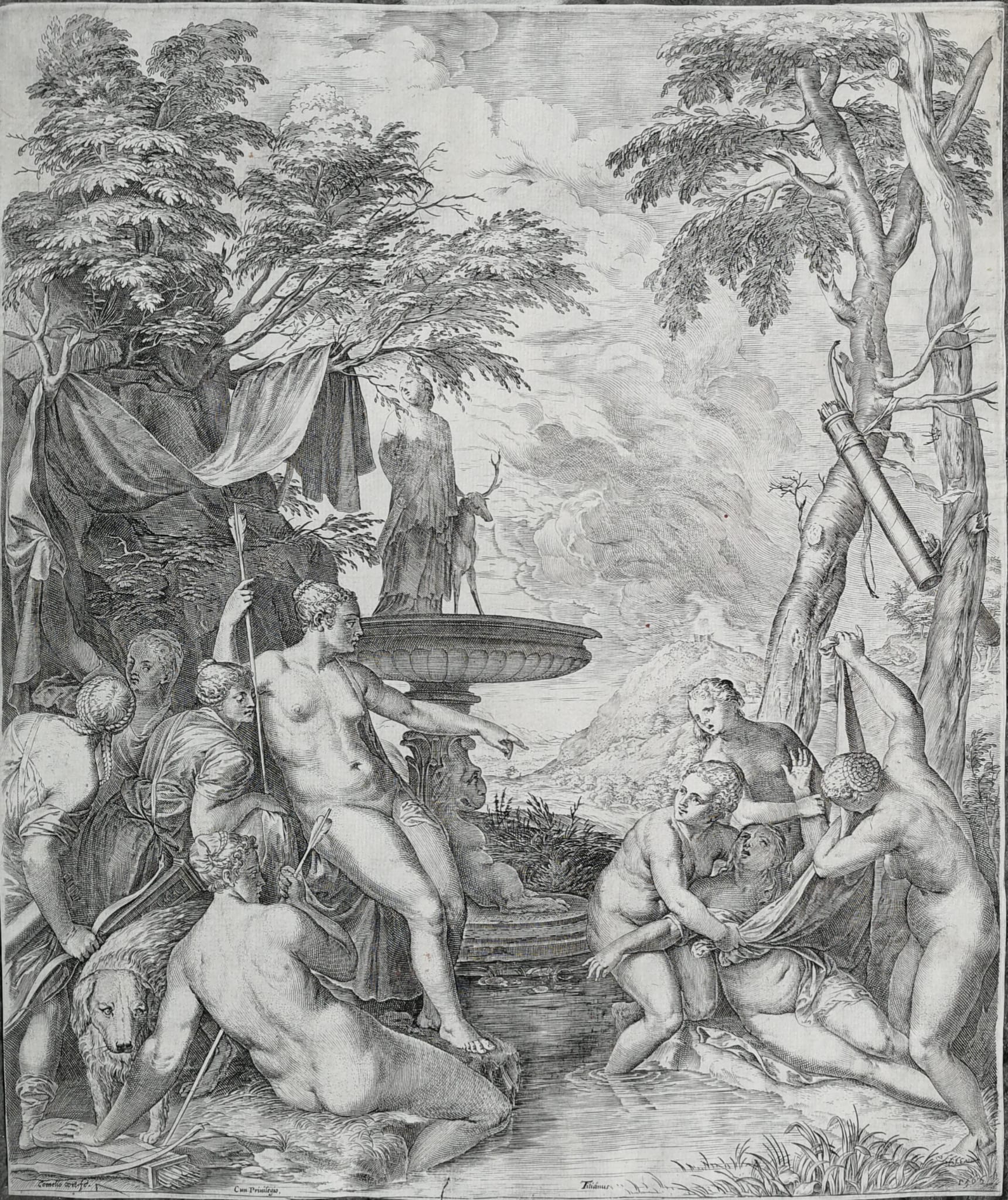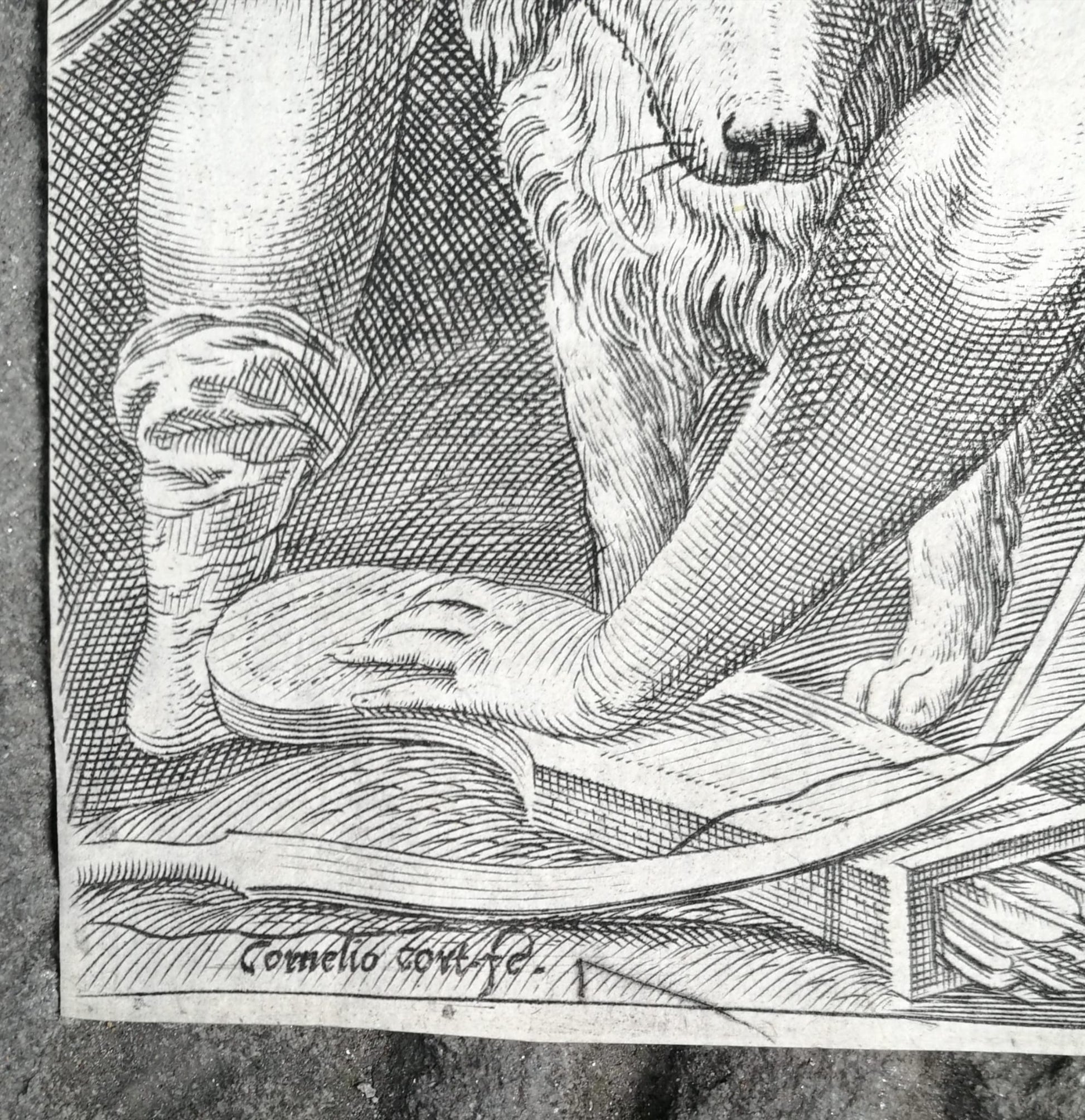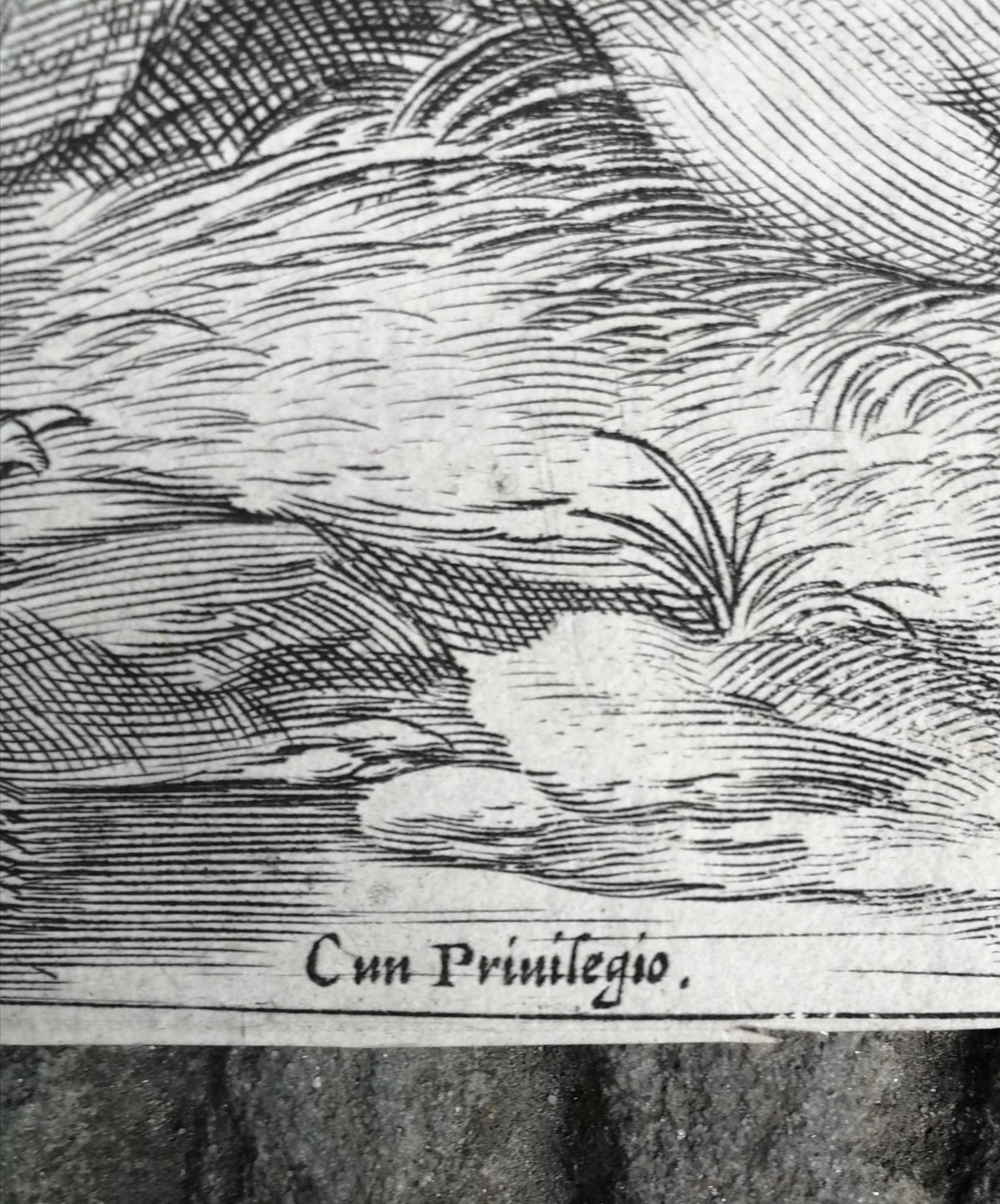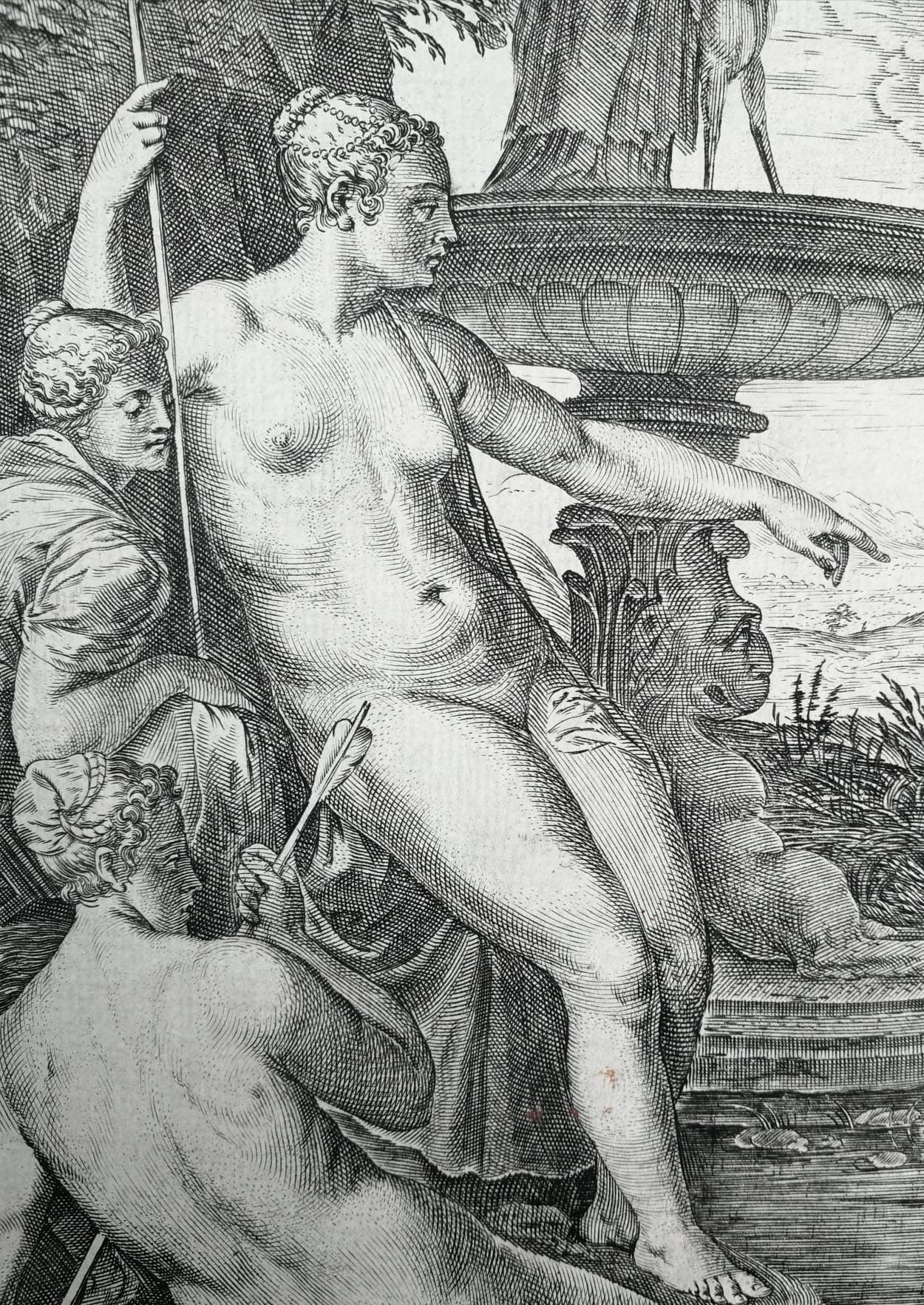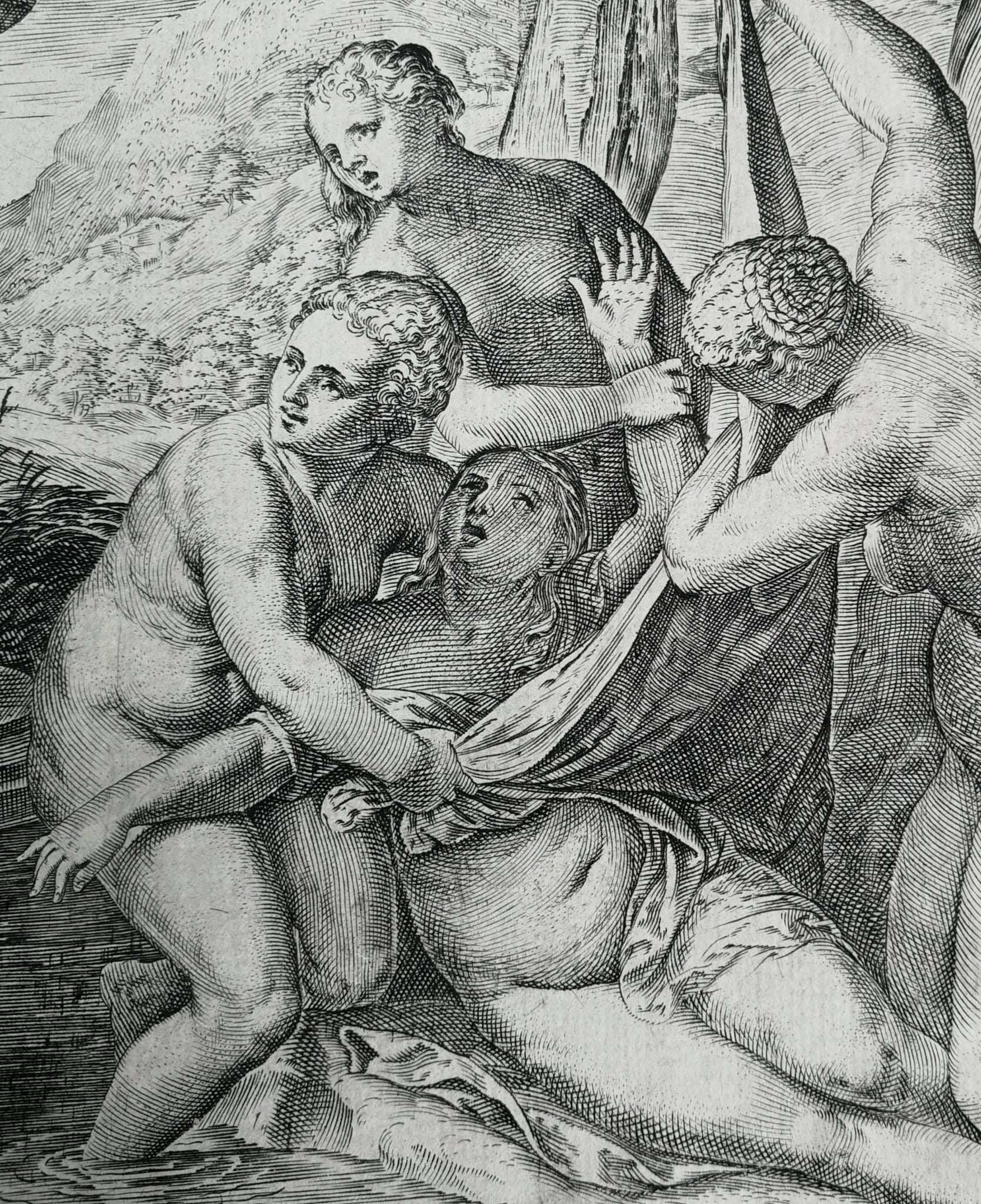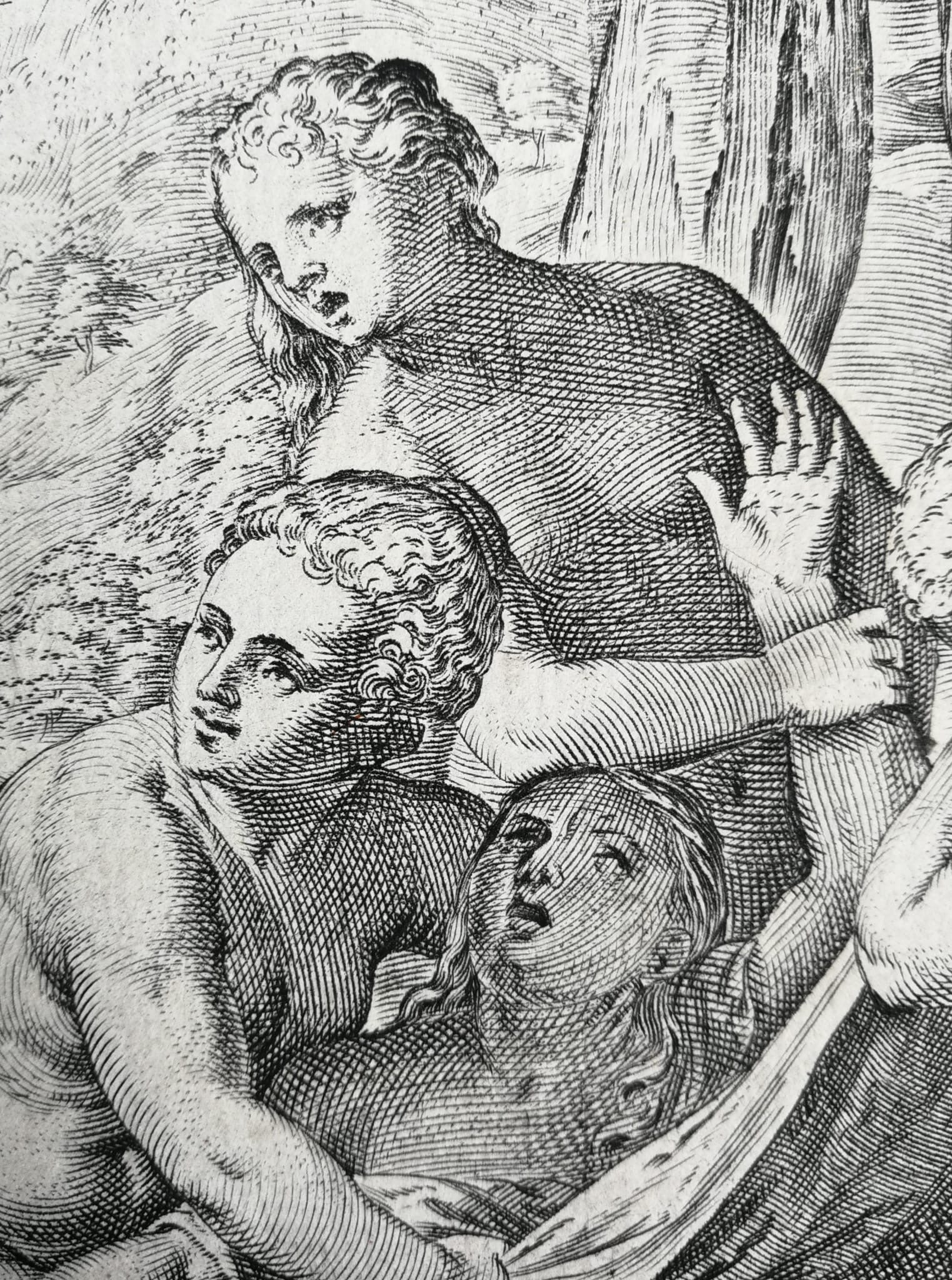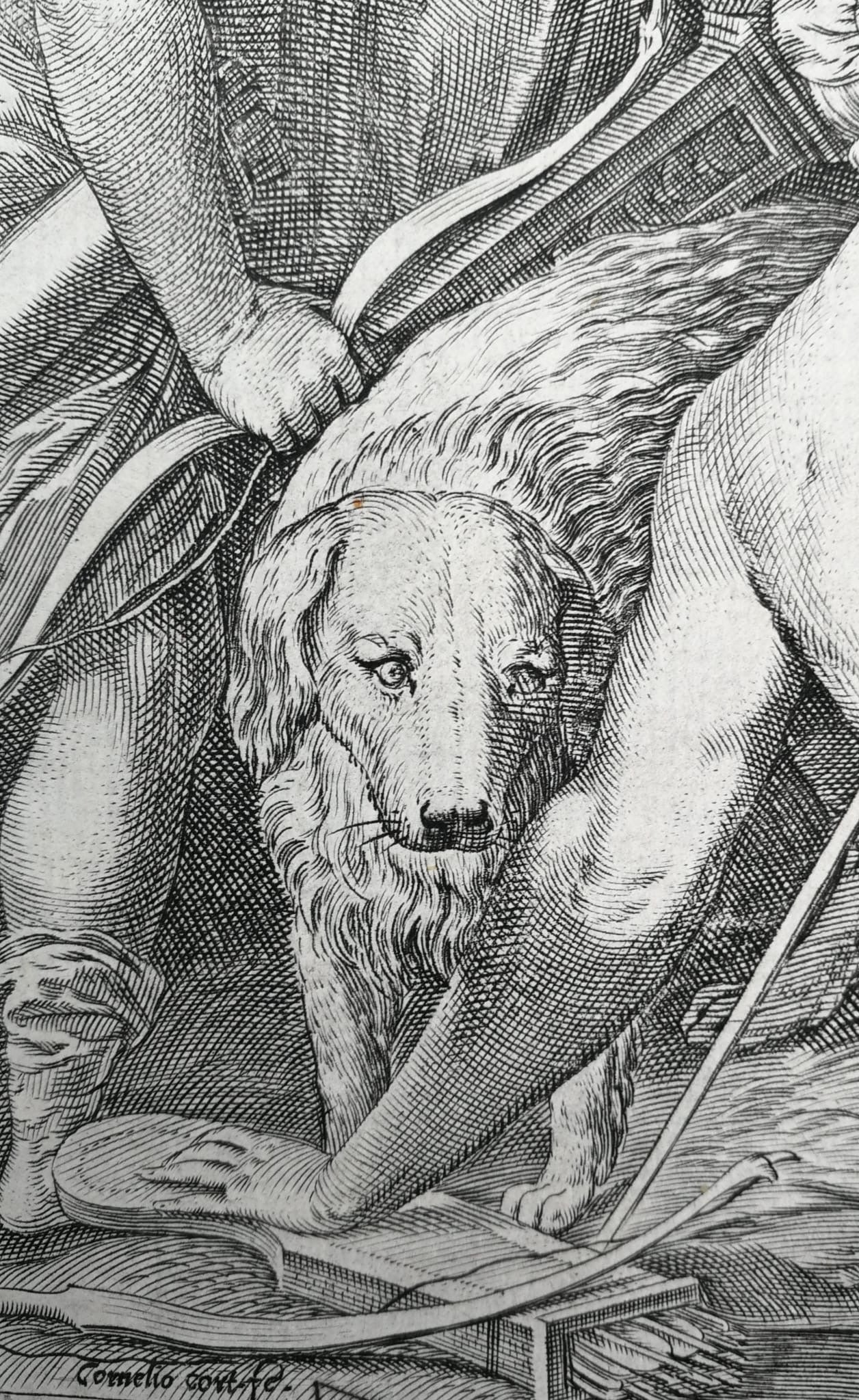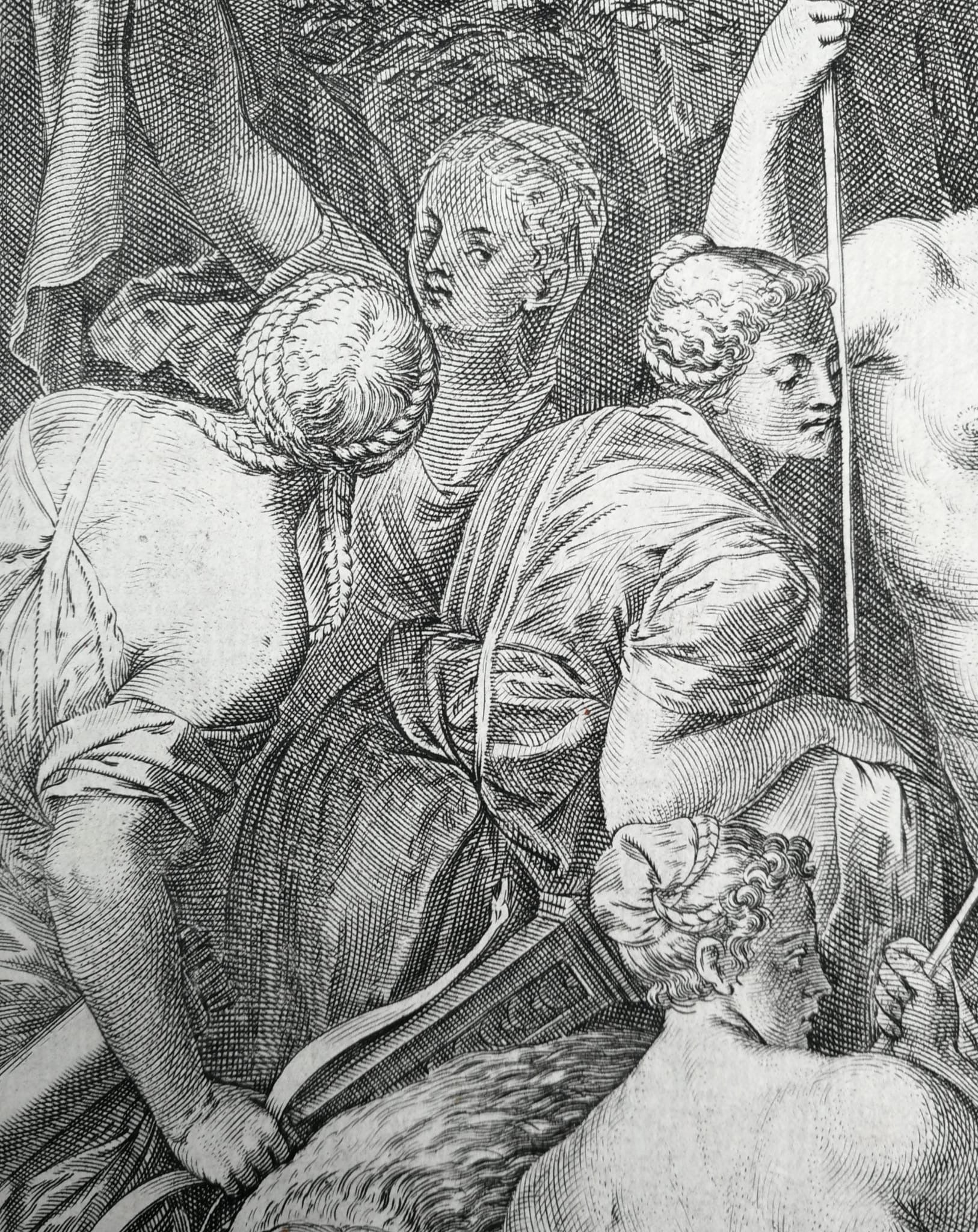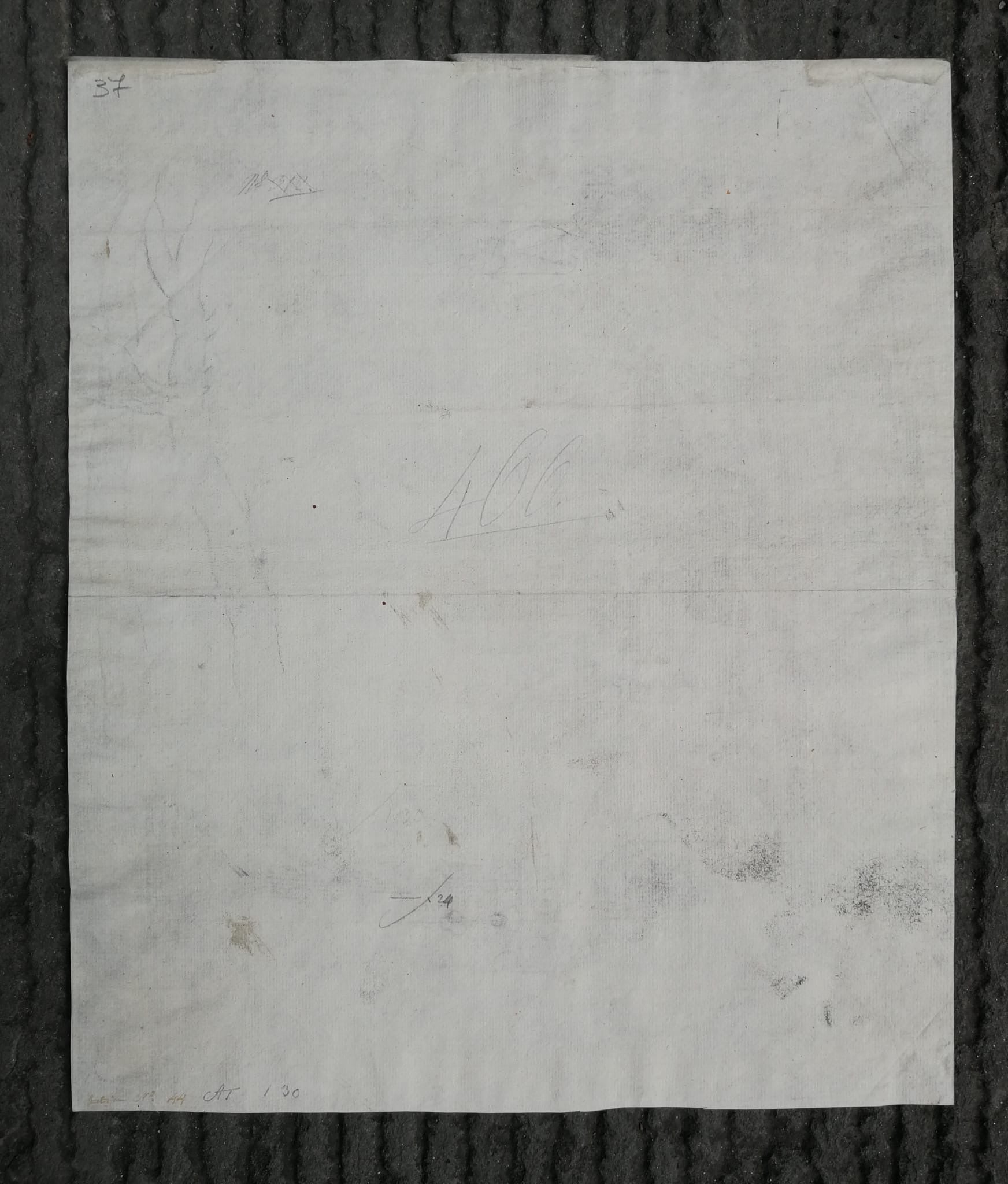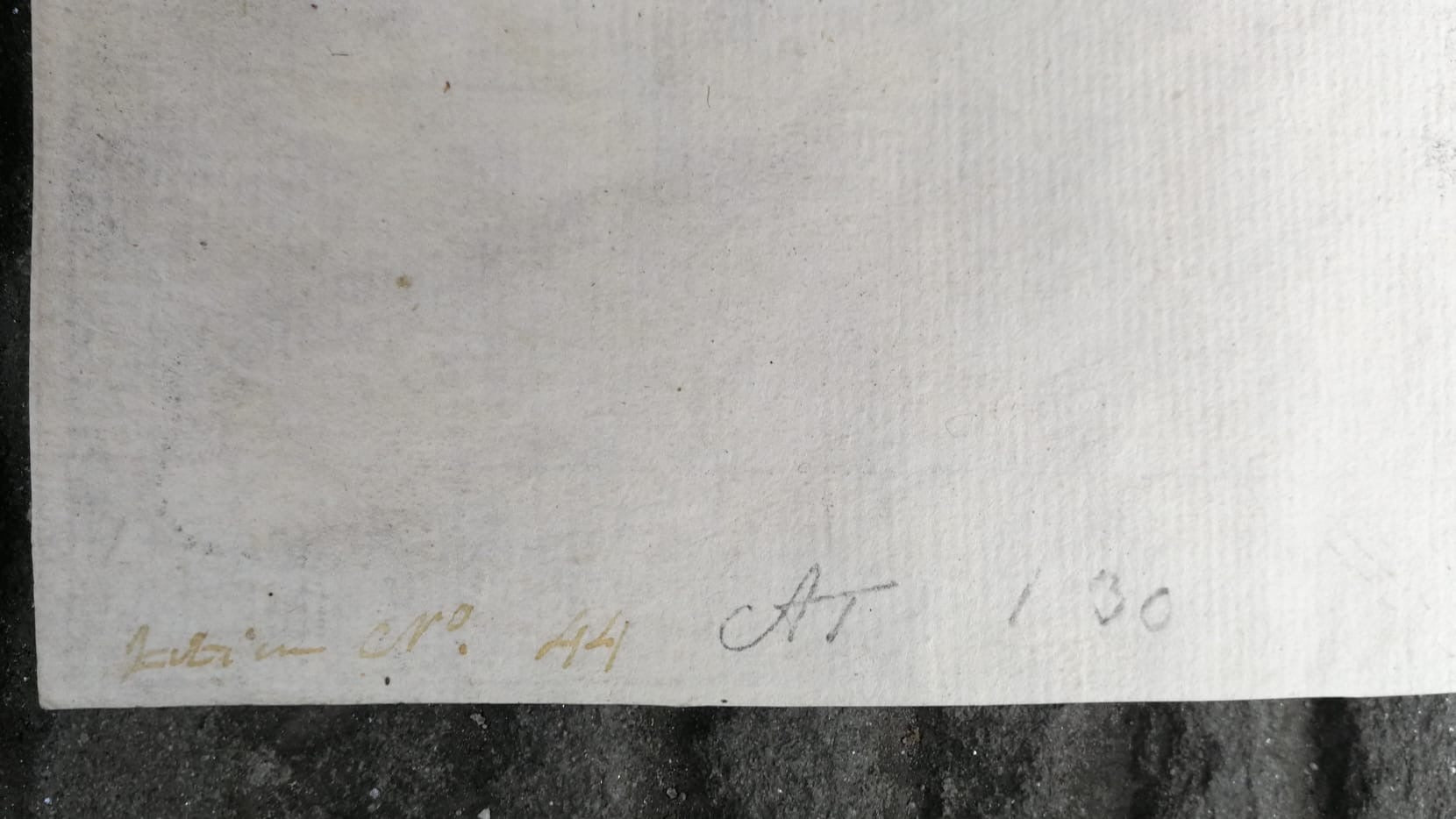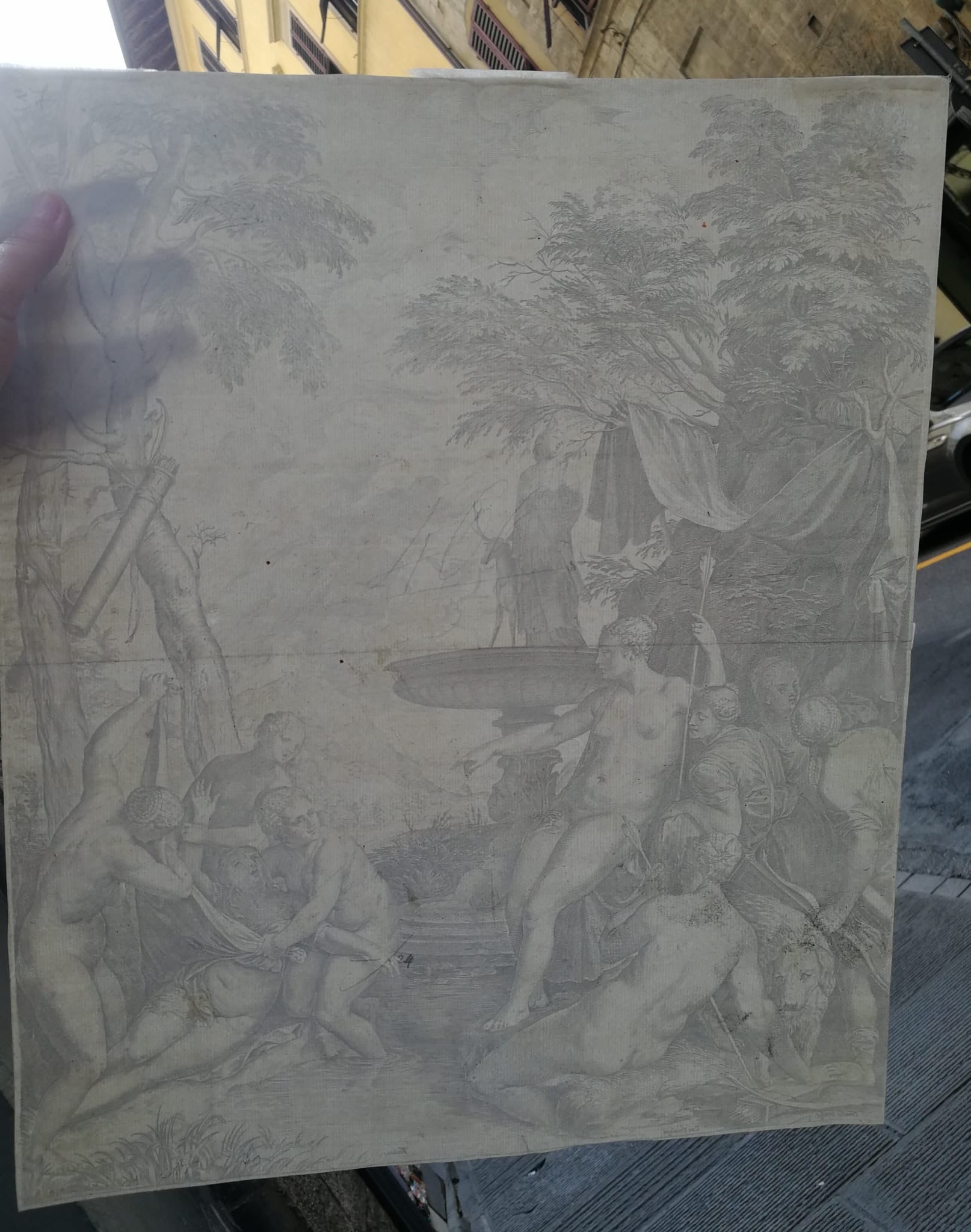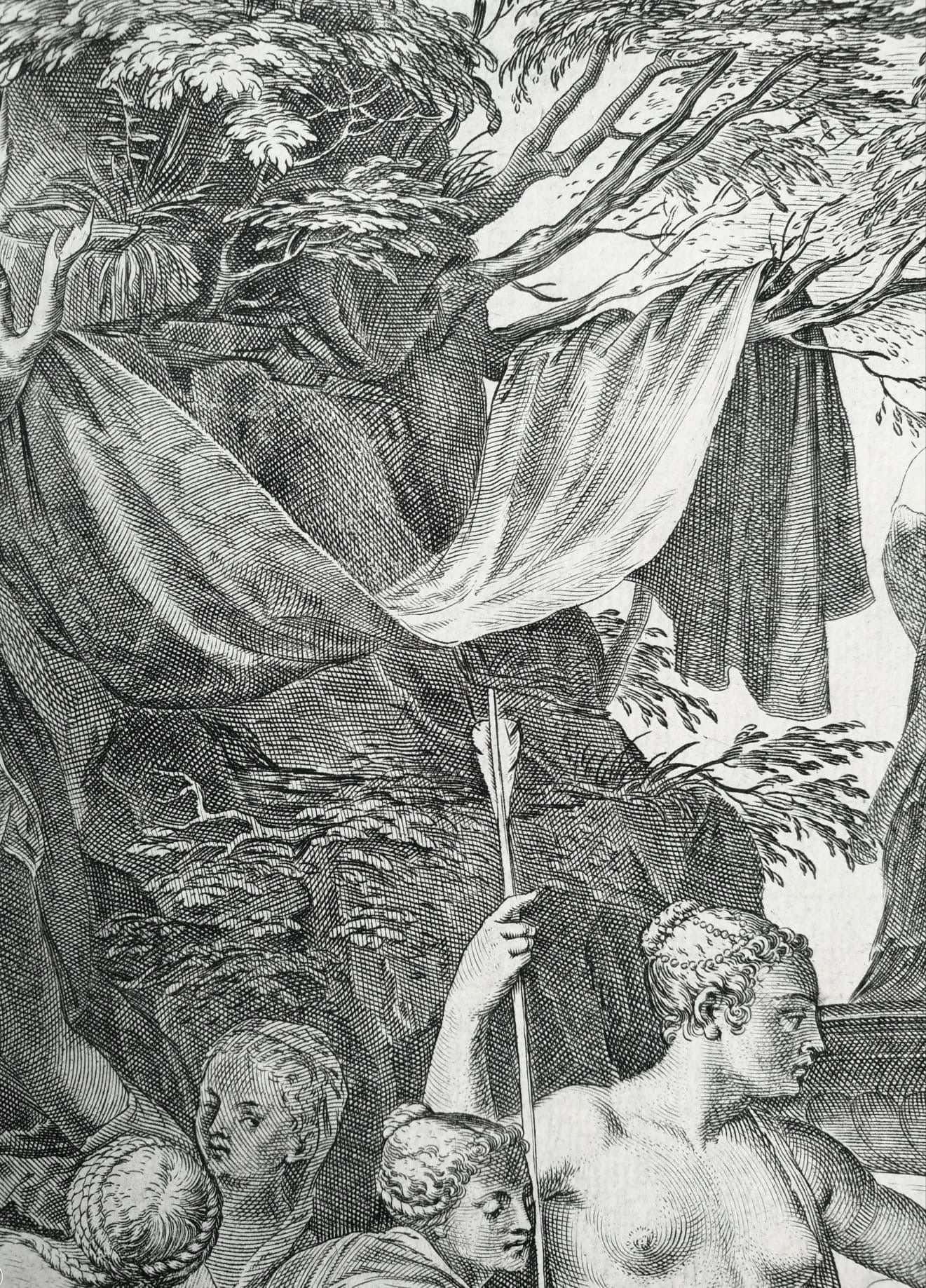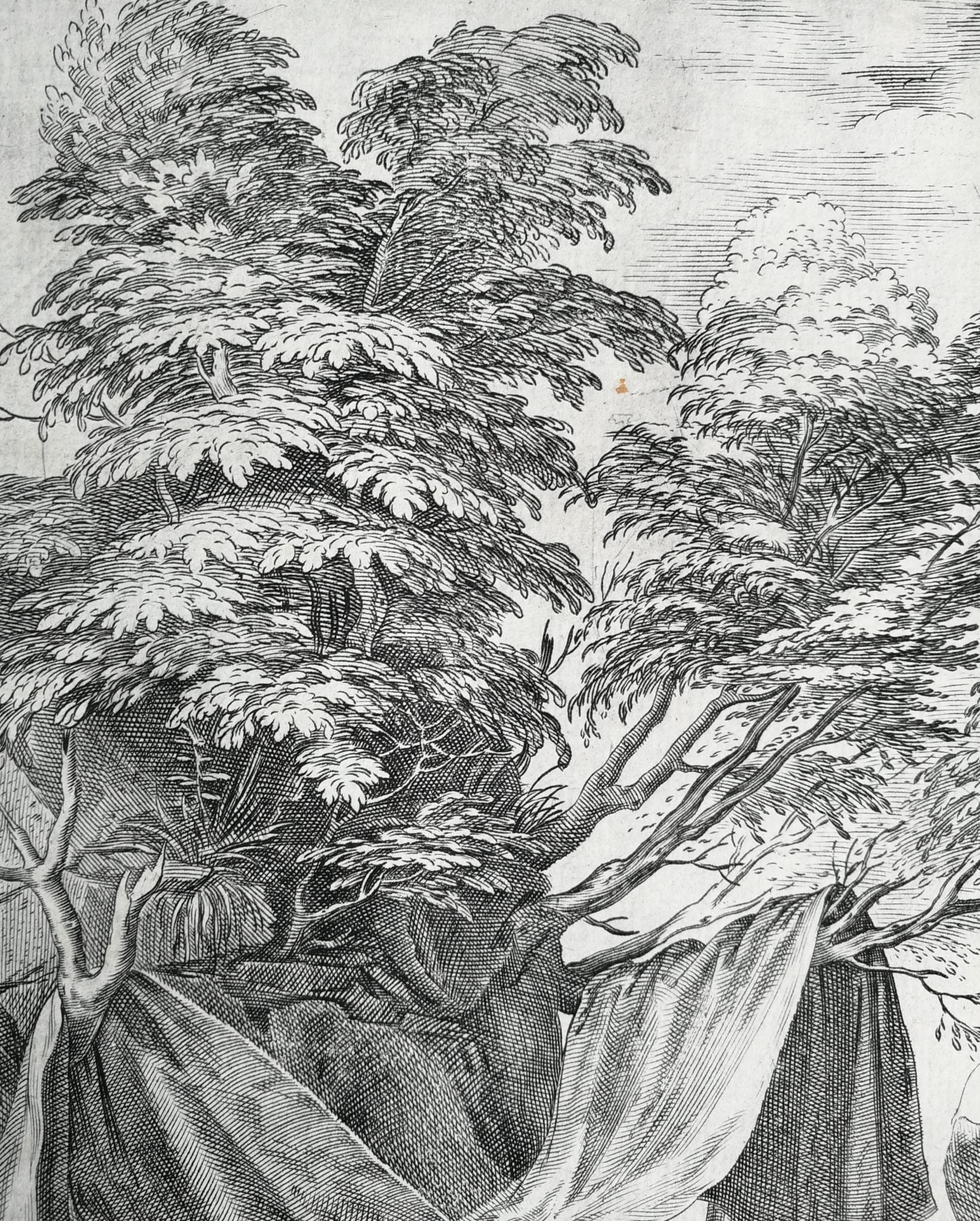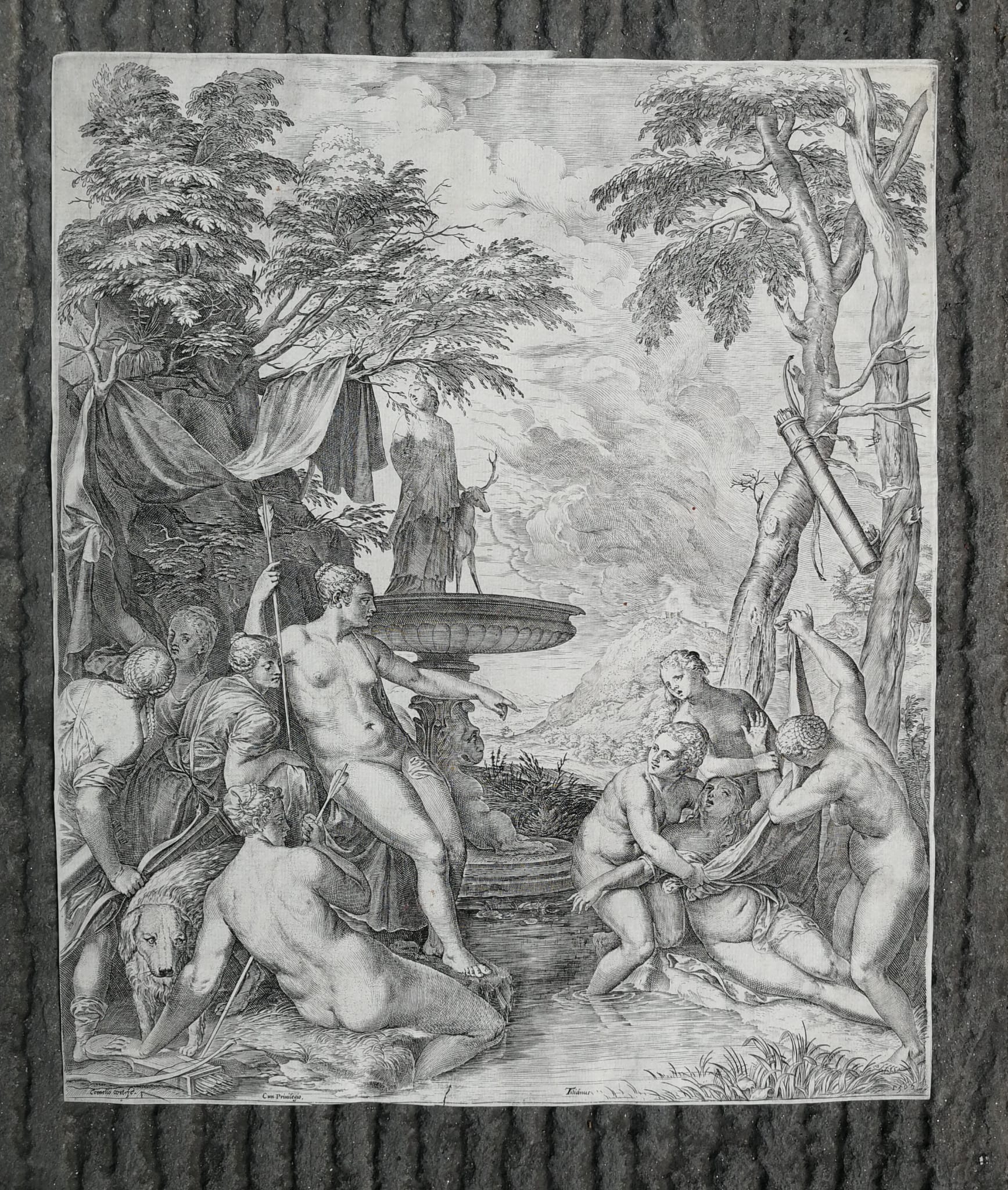@alina.malova
Cornelis Cort (1533–1578) – Diana and Callisto, engraving after Titian, Venice 1566, second state
Cornelis Cort (1533–1578) – Diana and Callisto, engraving after Titian, Venice 1566, second state
Couldn't load pickup availability
🎈SOLD
Cornelis Cort (Hoorn, 1533 – Rome, 1578)
Diana Discovering Callisto’s Pregnancy
After Titian Vecellio (Pieve di Cadore, ca. 1485/90 – Venice, 1576)
1566
Engraving on laid paper
Plate ca. 426 × 318 mm, sheet ca. 440 × 370 mm
Signature: “Cornelio Cort fe.”
Inscription: “Cum Privilegio”
Second state (of three), original 16th-century print
Description and context
Engraved in Venice in 1566, when Cornelis Cort was living in Titian’s household. Their collaboration was direct and reciprocal: Titian provided the inventions and drawings, while Cort translated them into engraving with painterly effects capable of echoing the master’s use of light and color.
The scene, from Ovid’s Metamorphoses, depicts Diana and her nymphs unveiling Callisto’s pregnancy. At the center stands the fountain with the goddess’s statue and the stag, emblem of the hunt.
States of the plate
(Original 16th-century impressions, no later restrikes)
- First state – “Titianus invenit” only, without Cort’s name or privilege. Extremely rare.
- Second state – present impression – with Cornelio Cort fe. and Cum Privilegio. This is the first official privileged edition, printed in Venice around 1566–67 under Titian’s Senate-granted privilege.
- Third state – signature altered to Cornelio Cort sc., still with privilege, wider circulation.
➡️ This work is therefore an original 16th-century engraving in the rare second state, of which only about 15–20 impressions are known today in museums and private collections.
The Venetian privilege
In 1567 the Venetian Senate granted Titian a 15-year printing privilege for engravings after his inventions, forbidding any unauthorized reproductions. Cornelis Cort was the executor of this privilege, producing official engravings for European circulation.
The inscription Cum Privilegio on the sheet is the visible proof of this system, acting as an early form of copyright and confirming the authenticity and antiquity of the print.
Critical reception
Already praised in the 17th century: Ridolfi (1648) described it as “il bagno di Calisto con molte ninfe”, and Boschini (1660) celebrated the scene in verse in his Carta del navegar pittoresco, noting Titian’s admiration for Cort’s translation into print.
Condition
Good overall condition: strong impression, dark ink, sound paper; light folds and natural patina consistent with age.
References
- Bartsch, Le Peintre-Graveur, XVI, no. 189
- Bierens de Haan, Catalogus van de prenten naar Titiaan, no. 157
- New Hollstein, Cornelis Cort, no. 189
- Ridolfi, Le Maraviglie dell’Arte, Venice 1648
- Boschini, La carta del navegar pittoresco, Venice 1660
Museum impressions
- Rijksmuseum, Amsterdam
- British Museum, London (state II)
- Metropolitan Museum, New York
- National Gallery of Art, Washington
- Albertina, Vienna
Materials
Materials
Dimensions
Dimensions
Care information
Care information
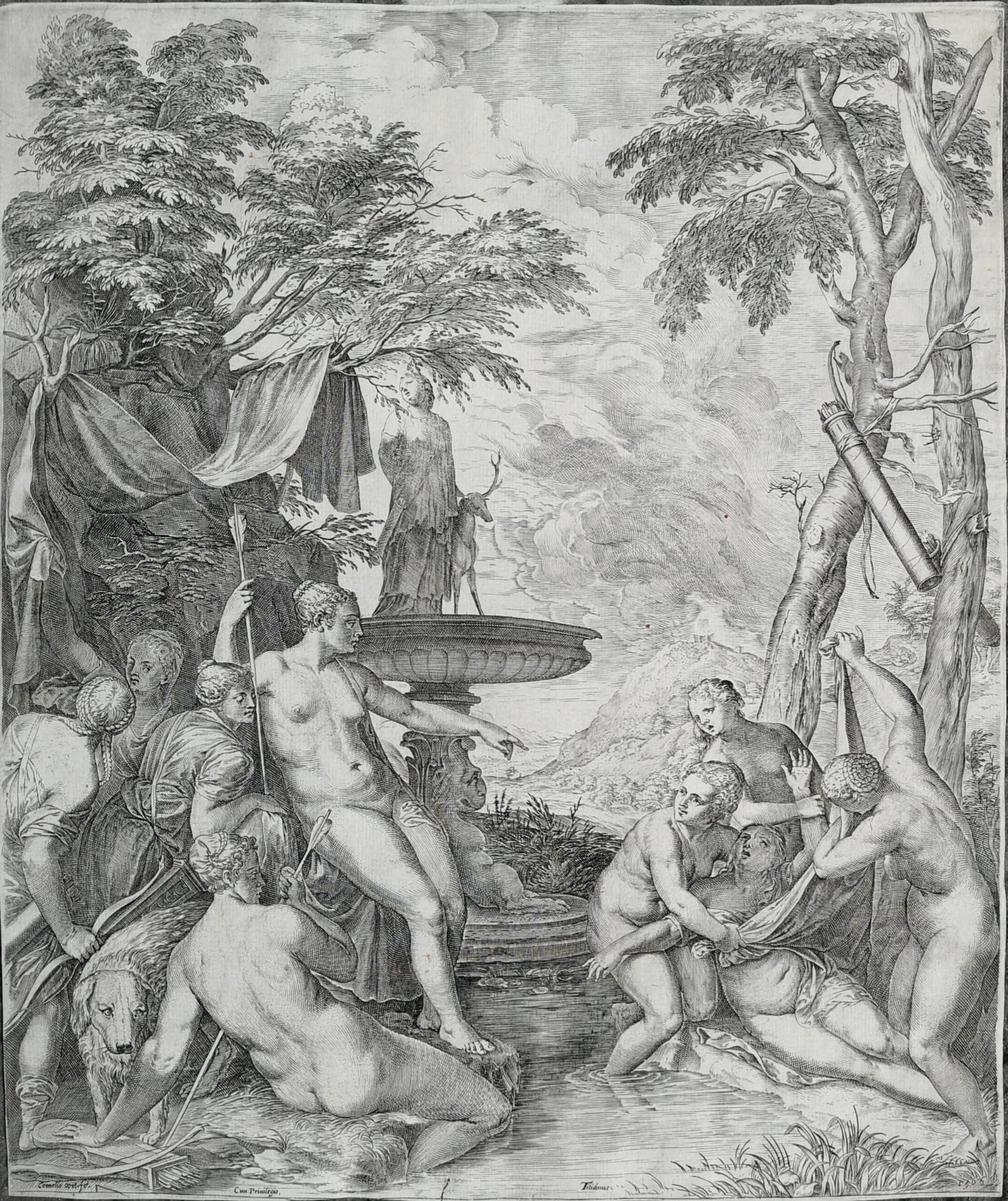
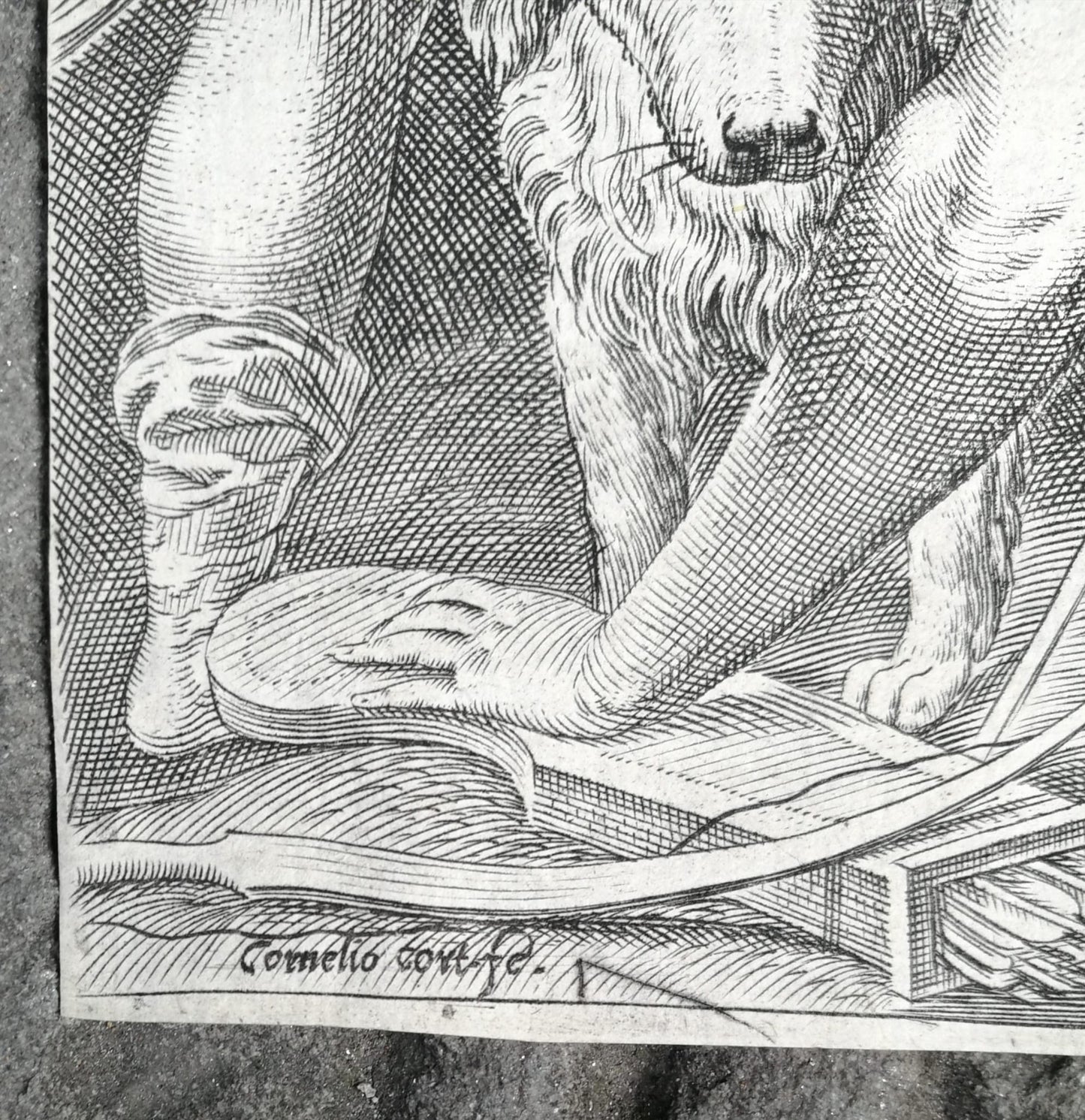
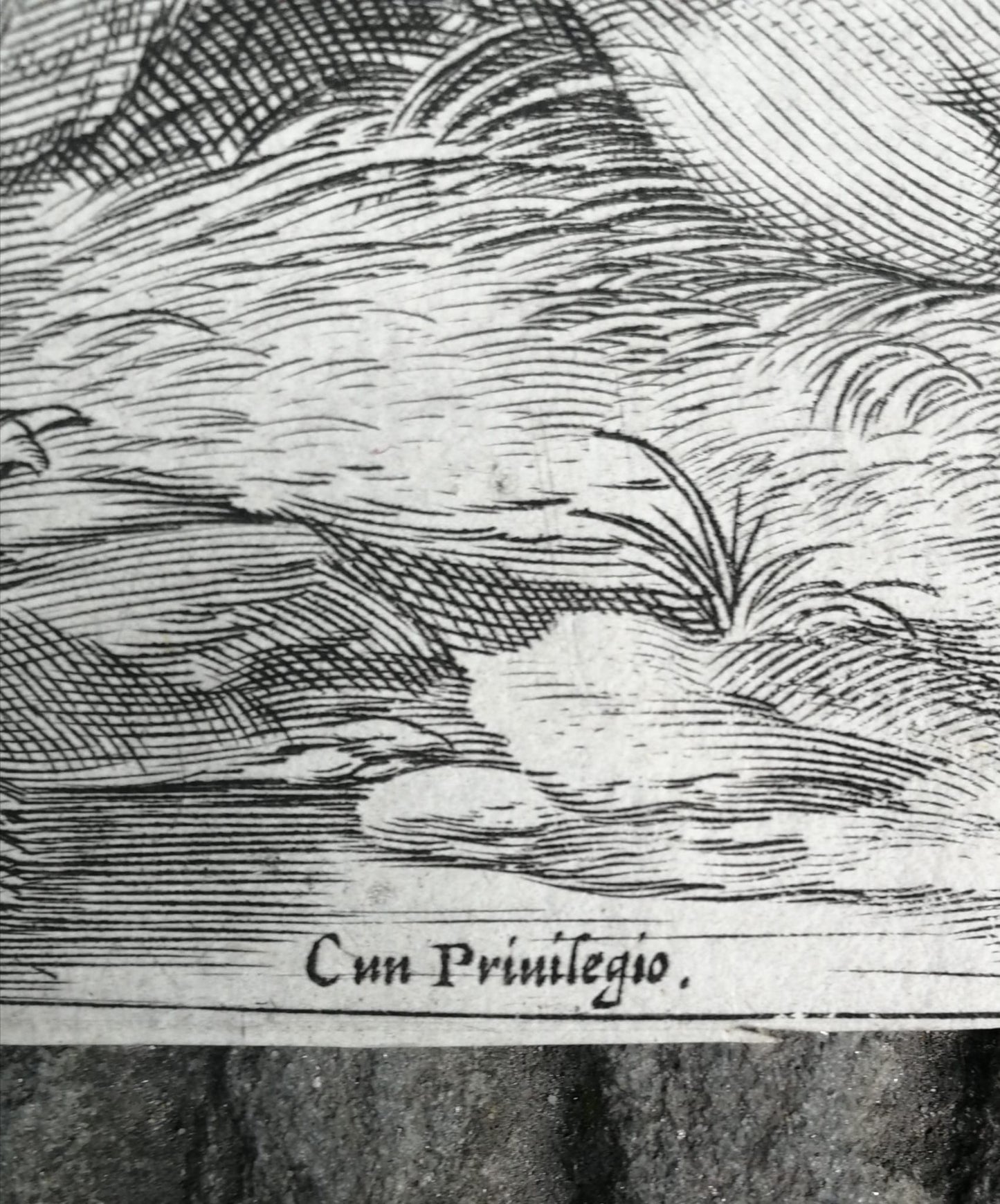
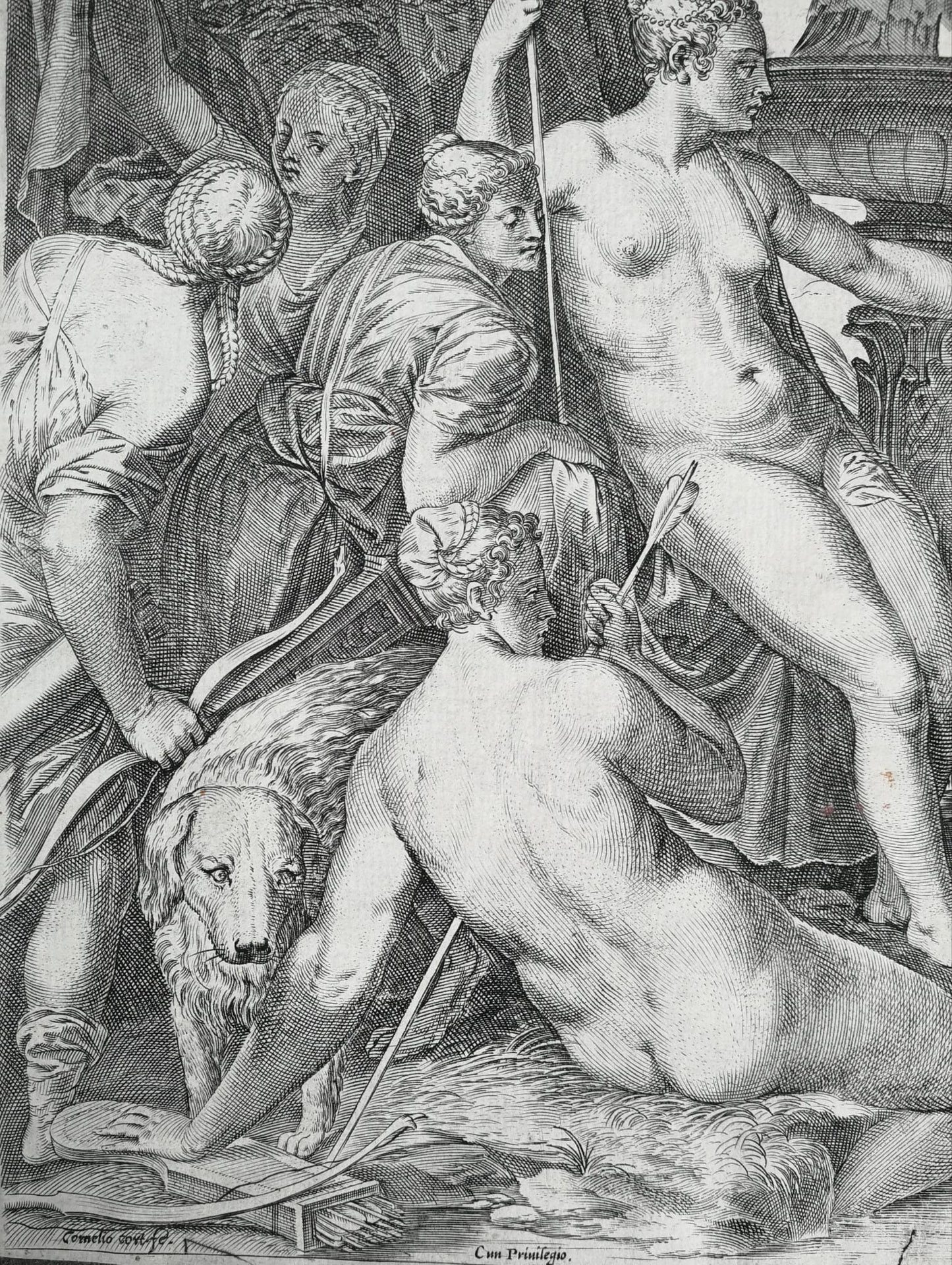
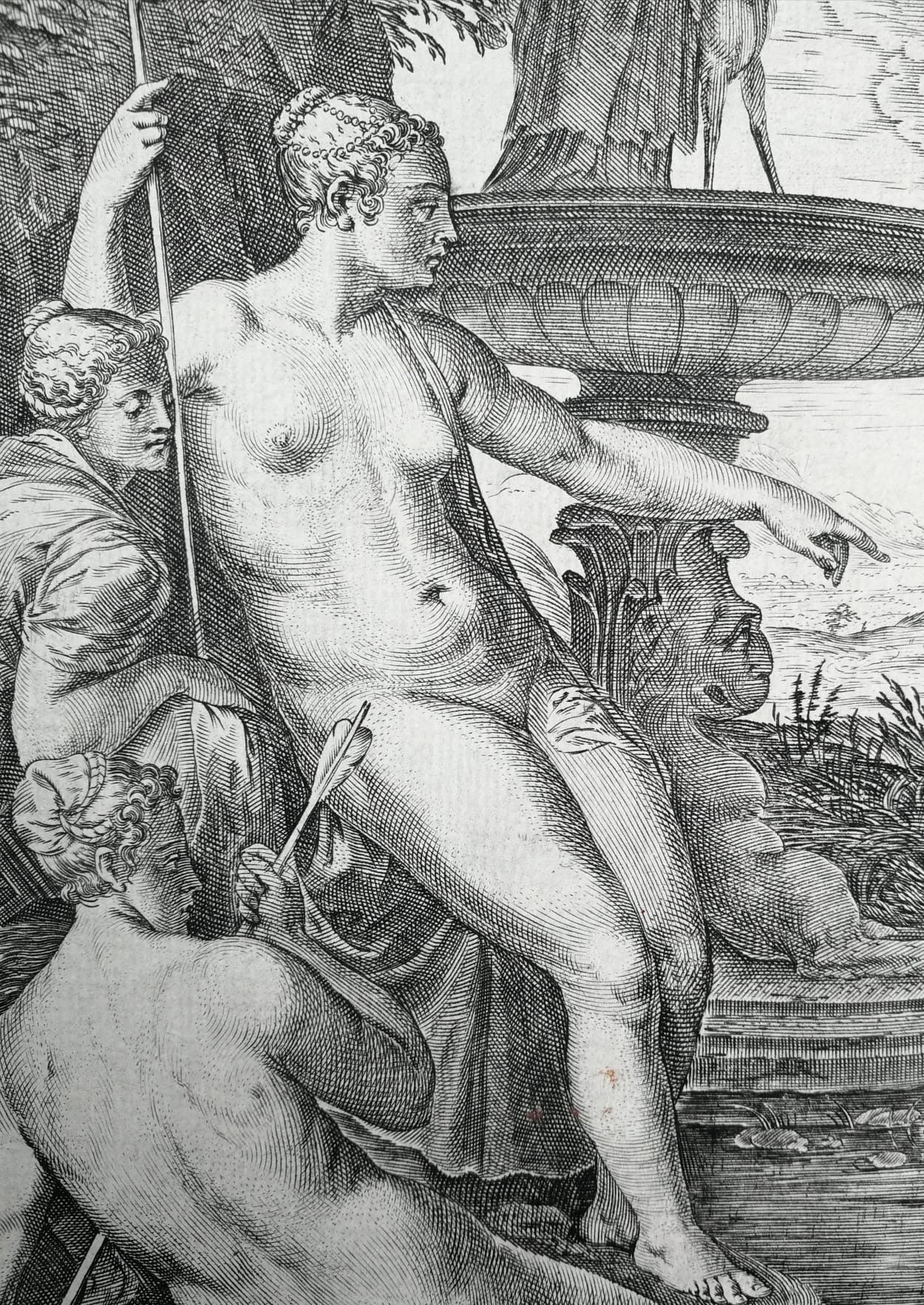
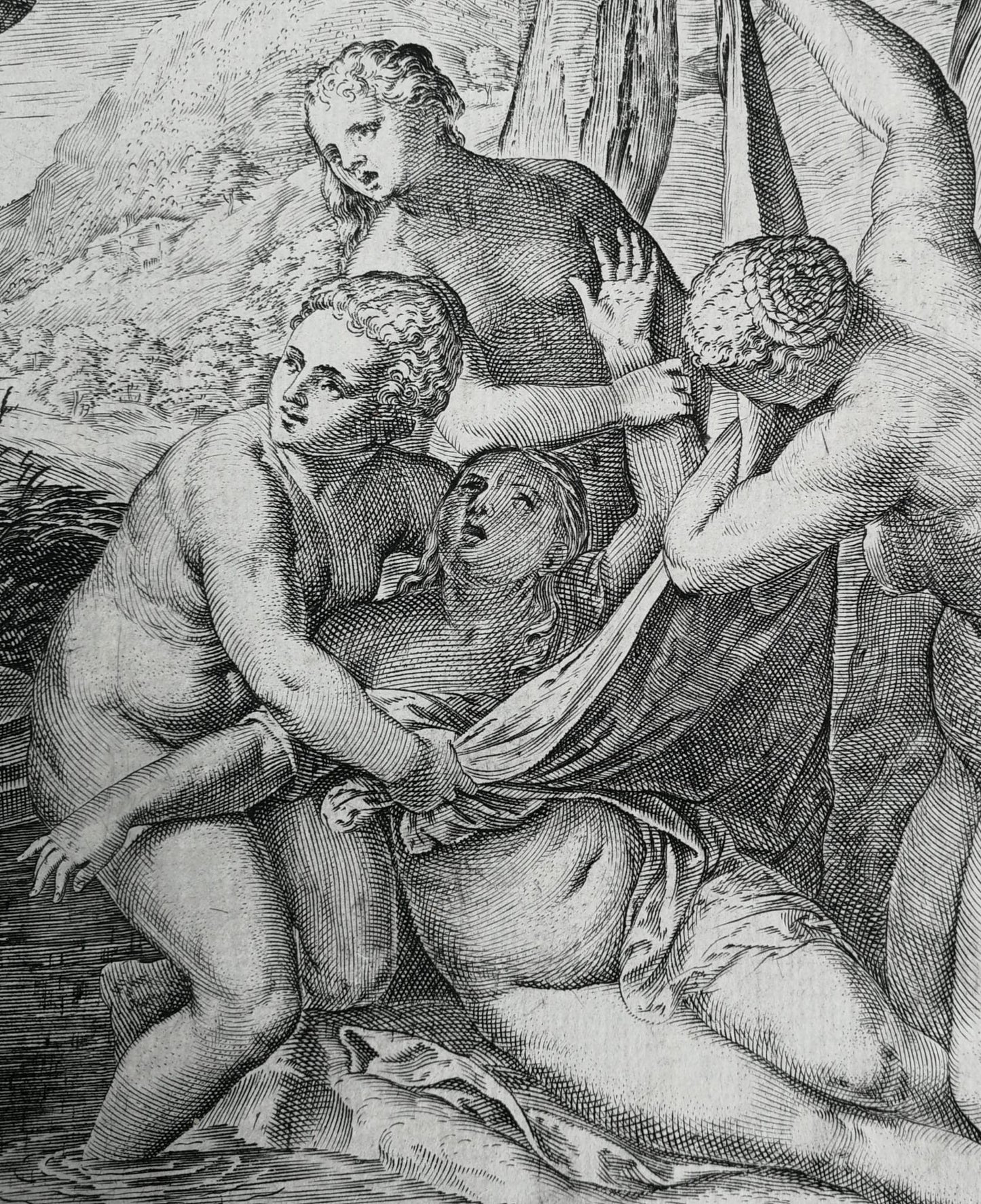
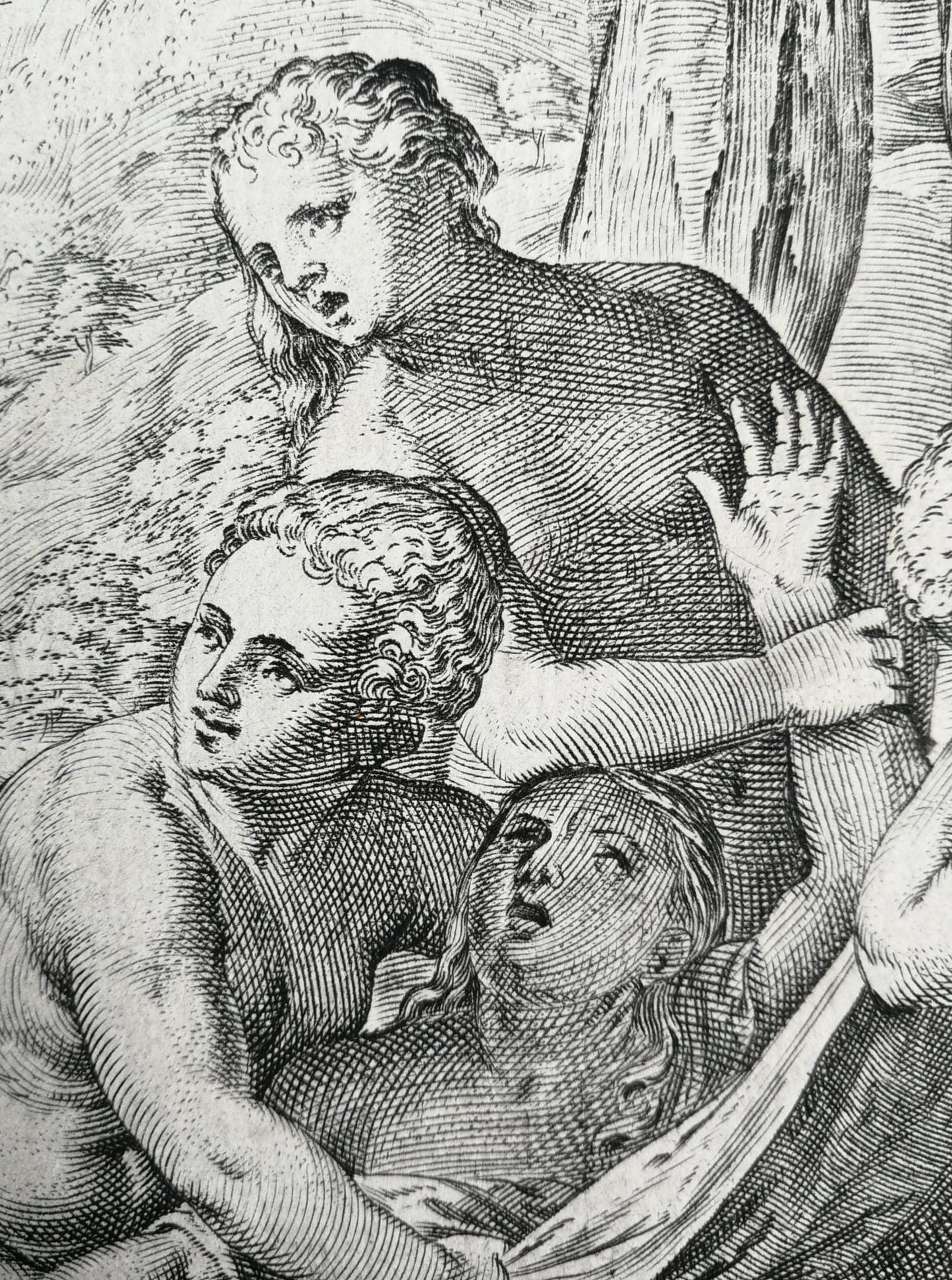
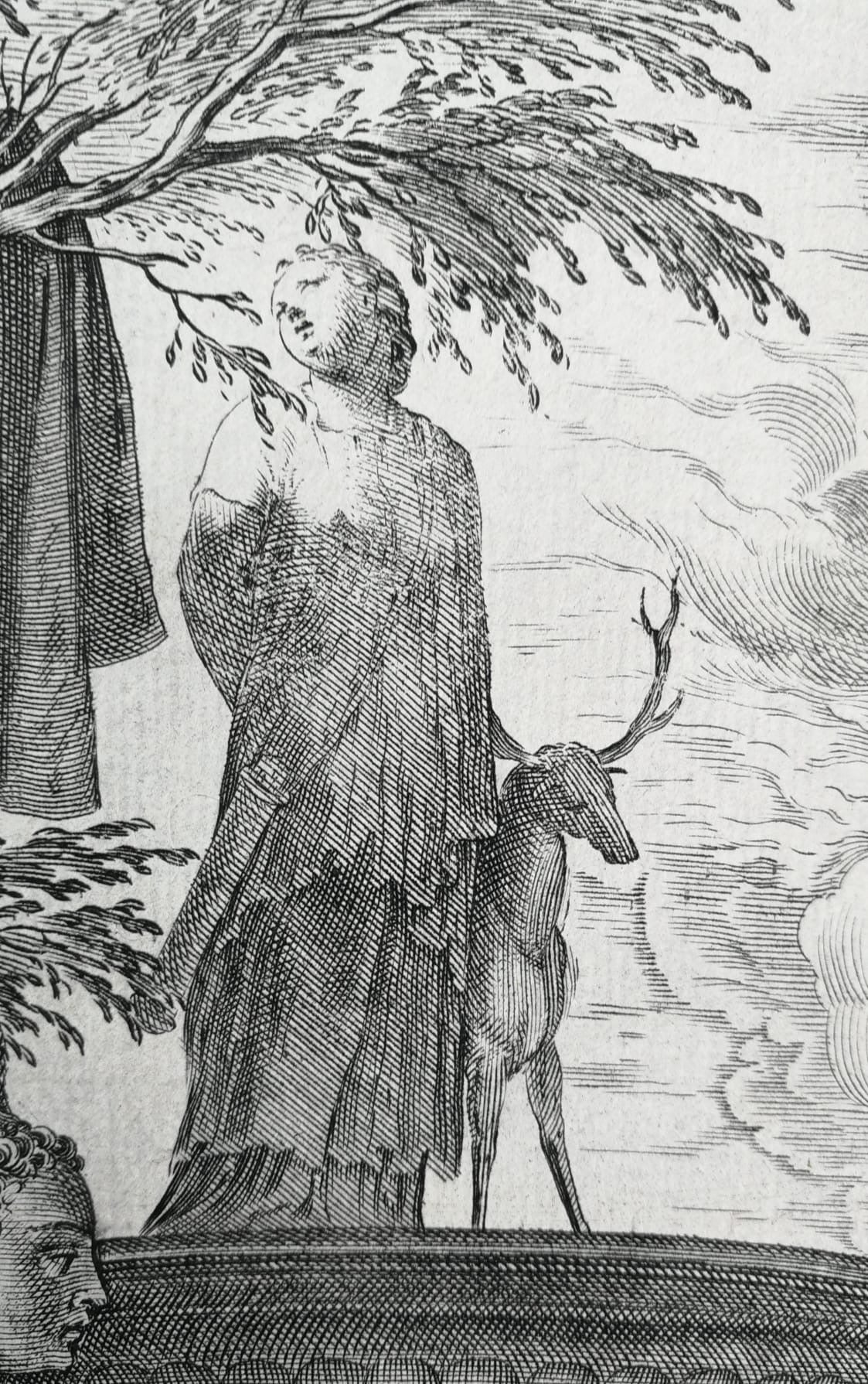
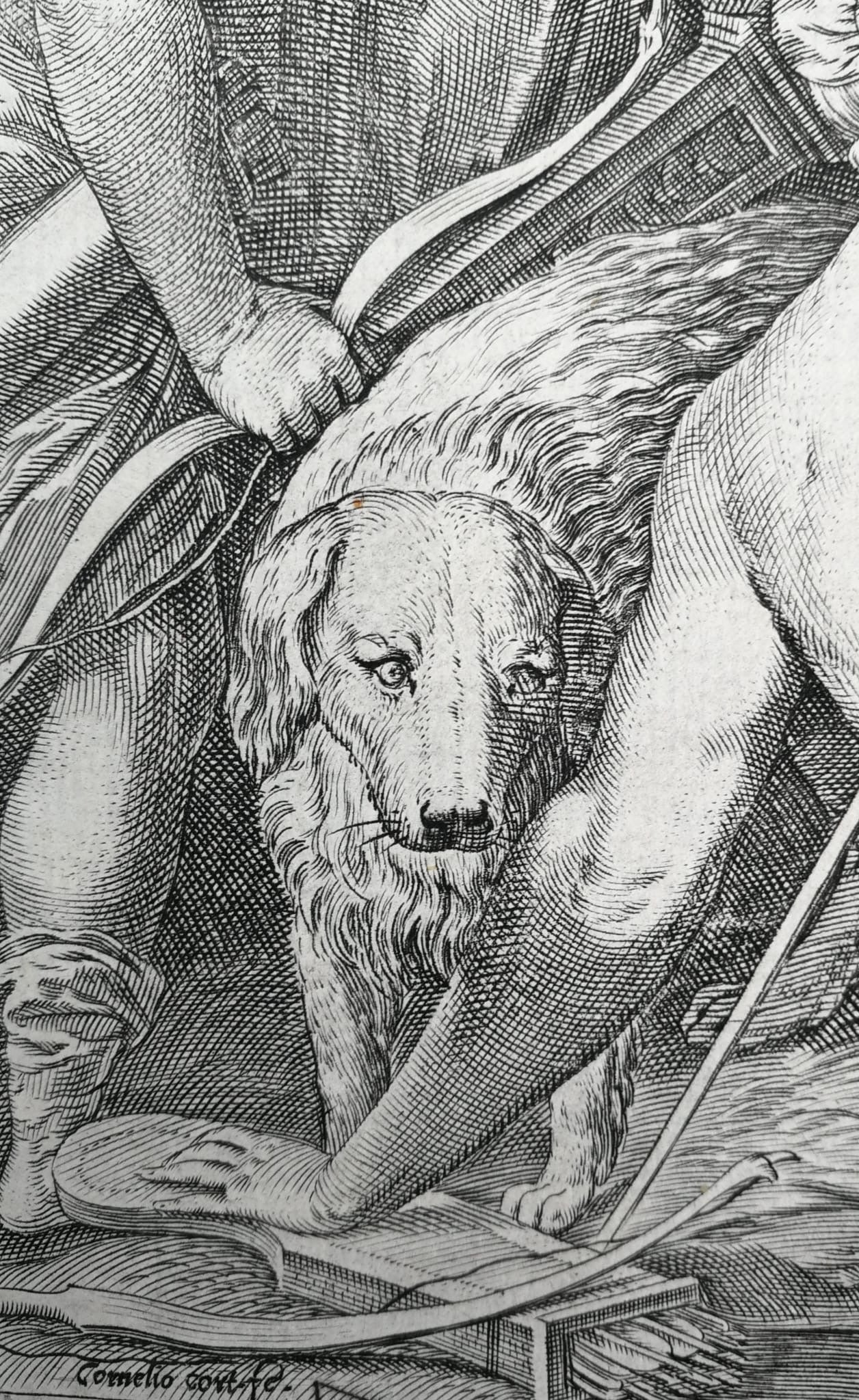
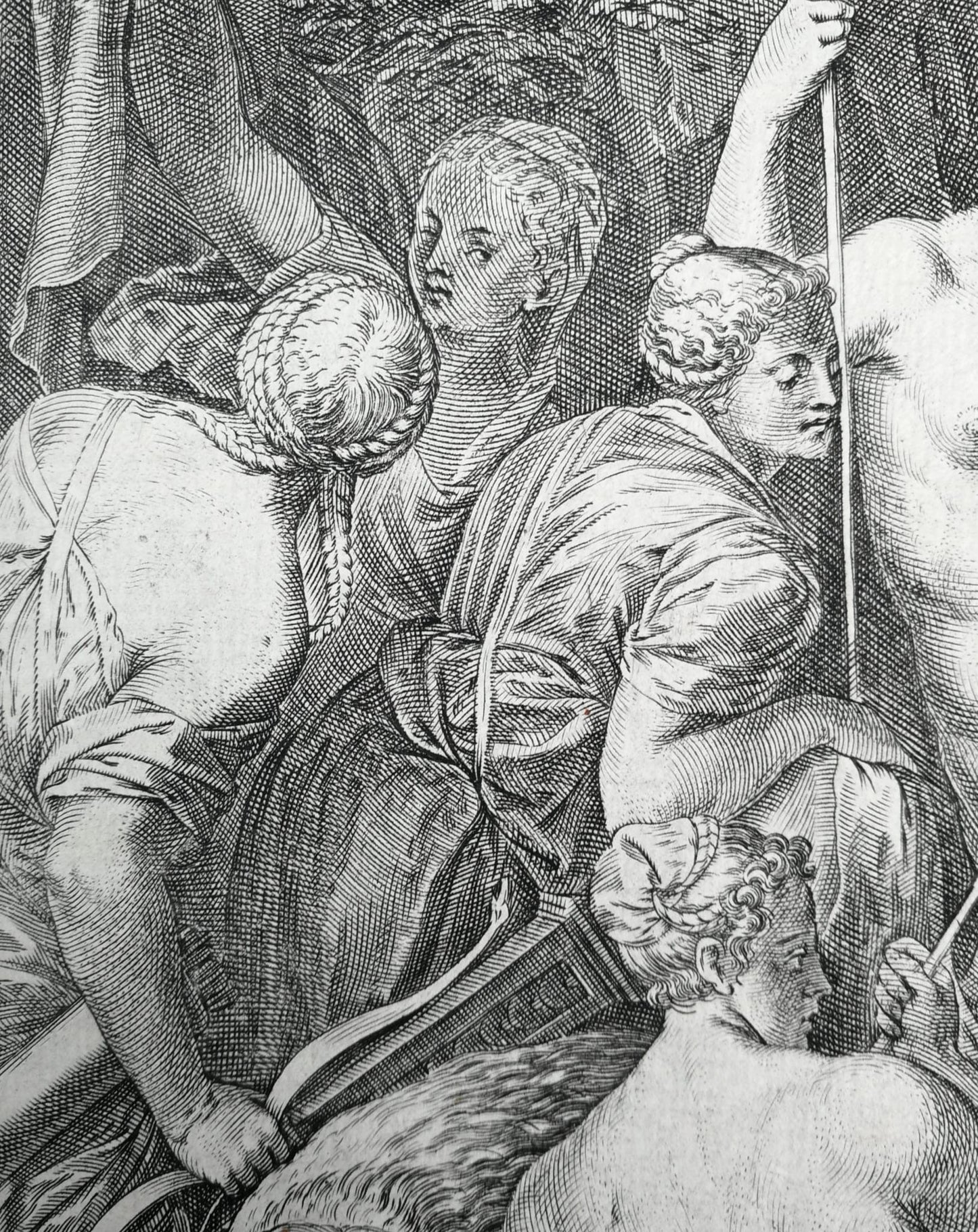
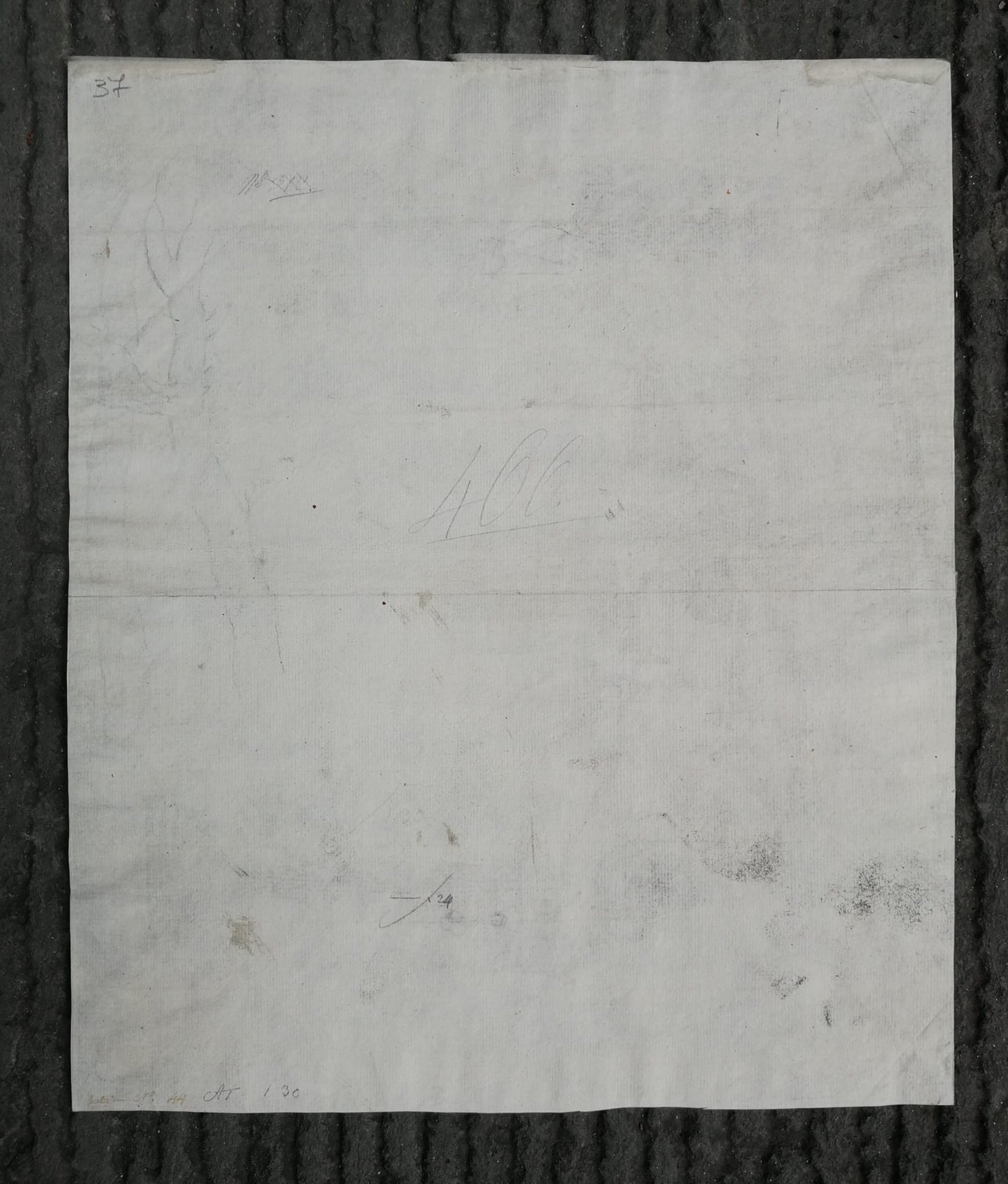
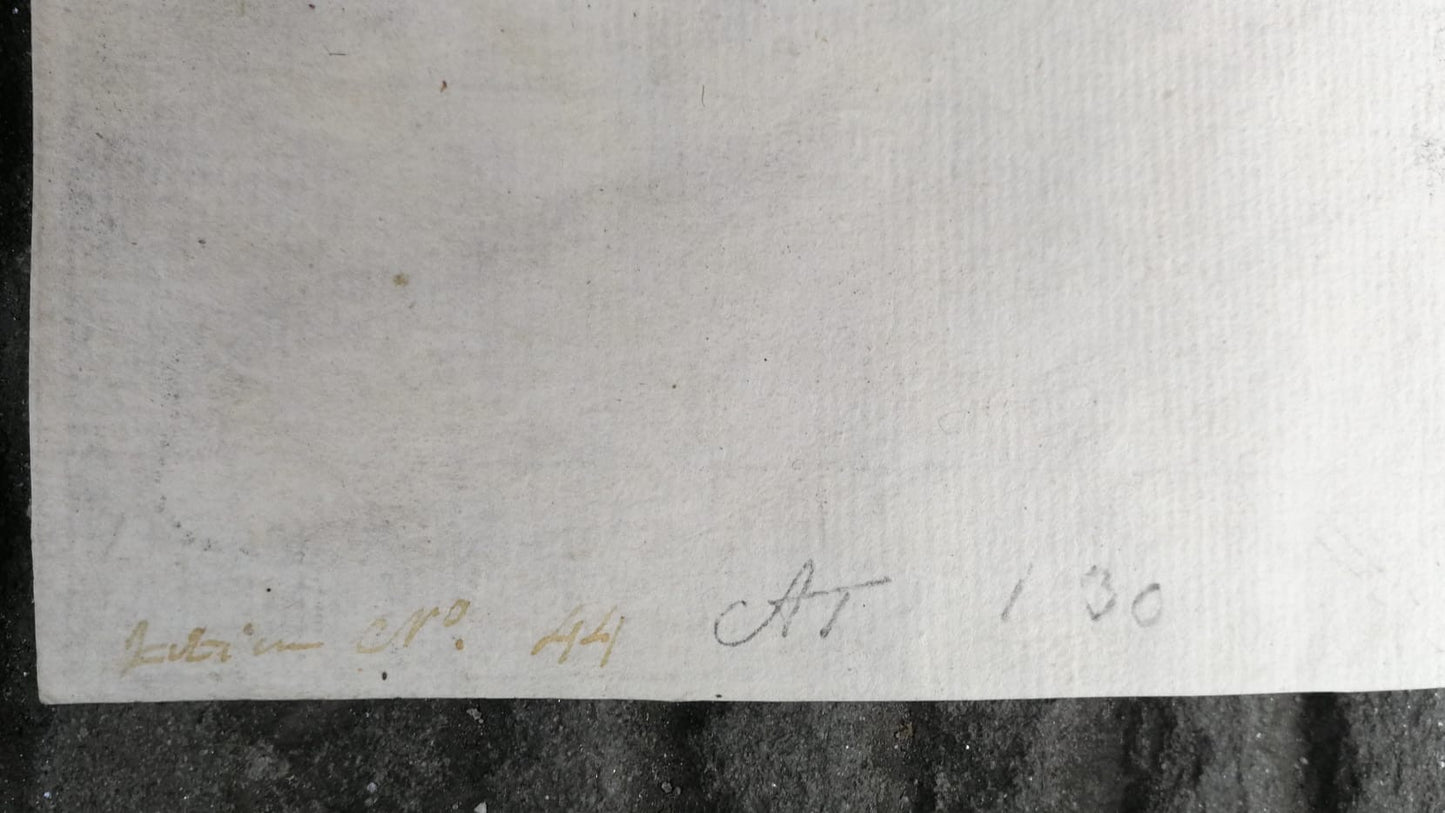
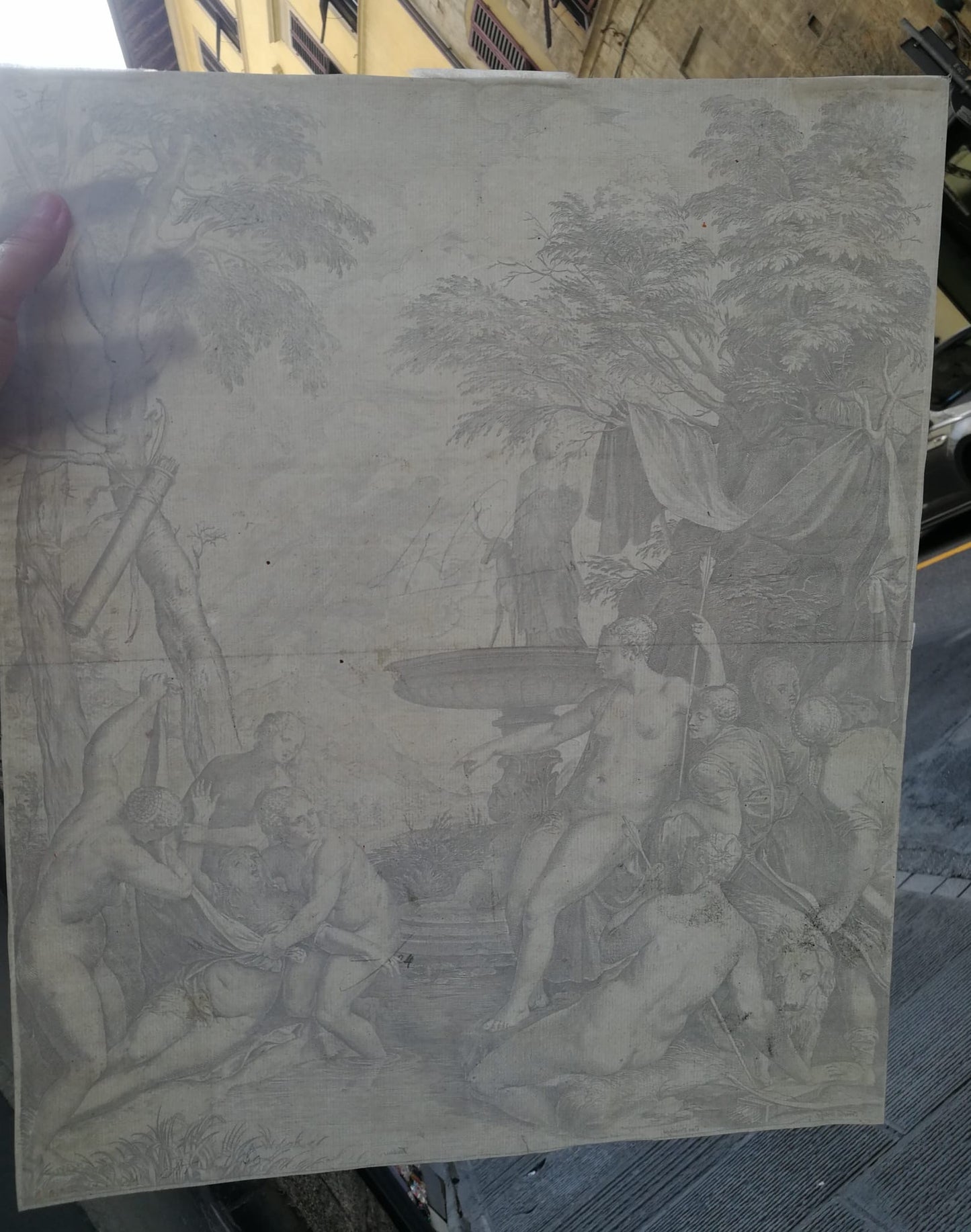
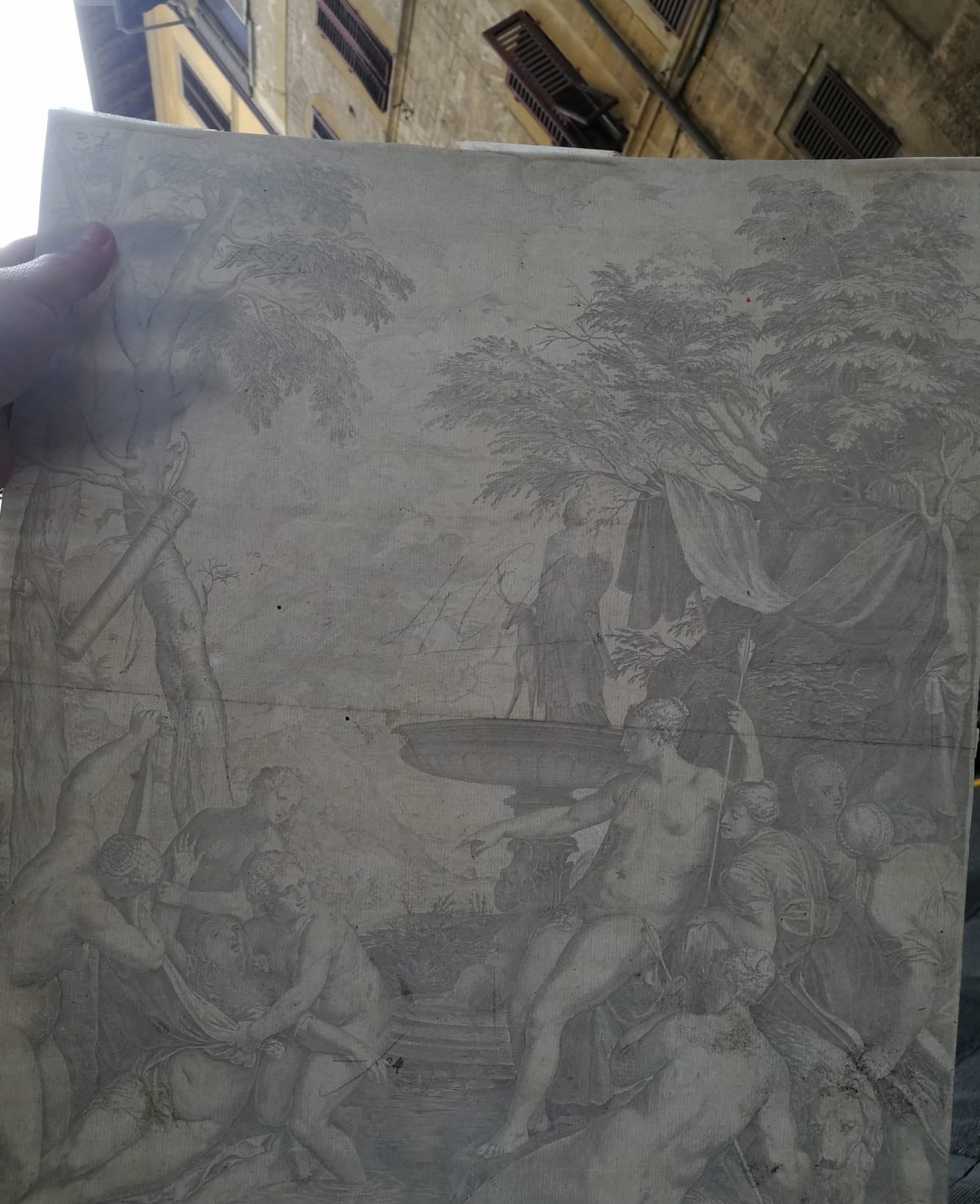
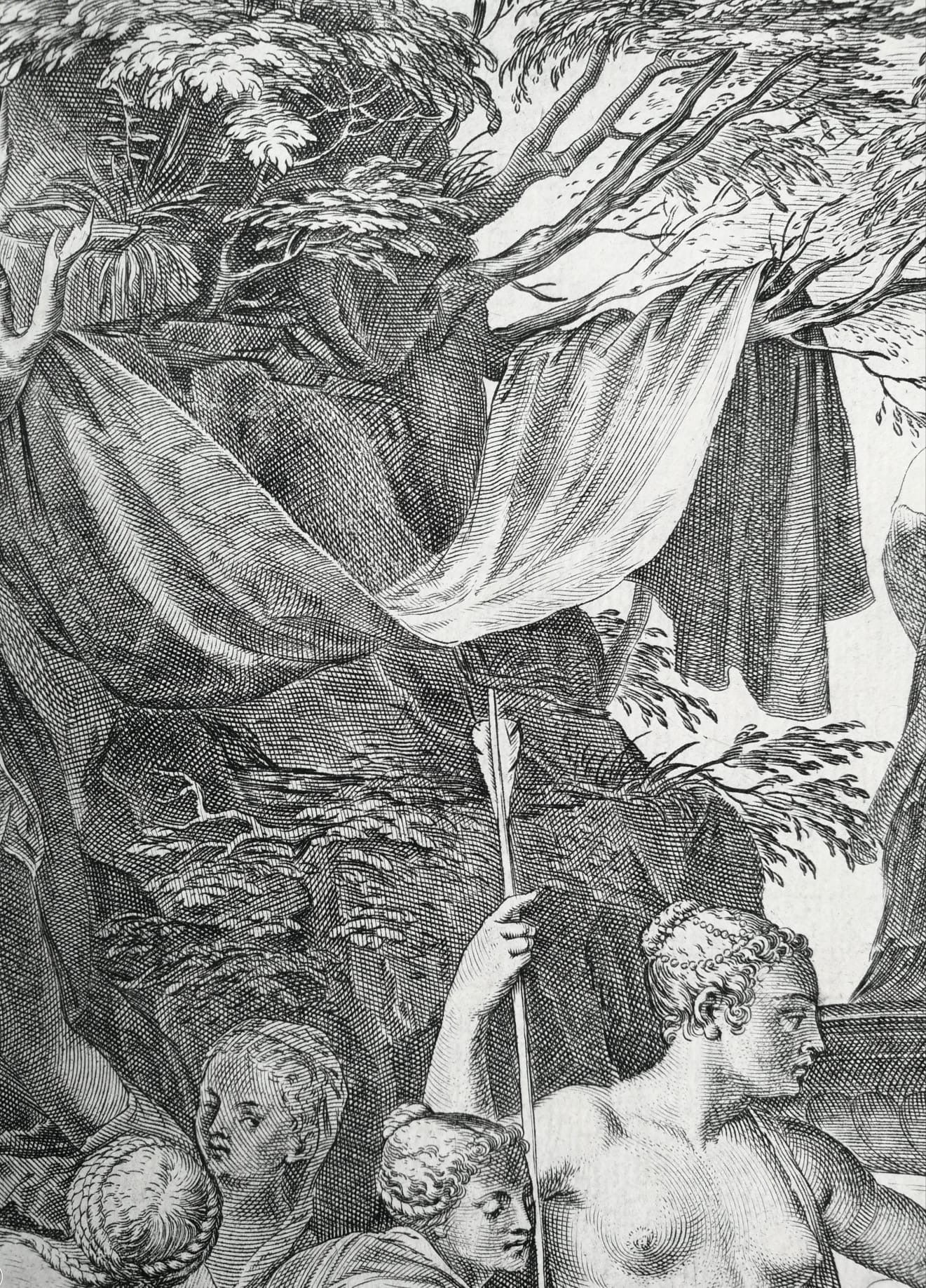
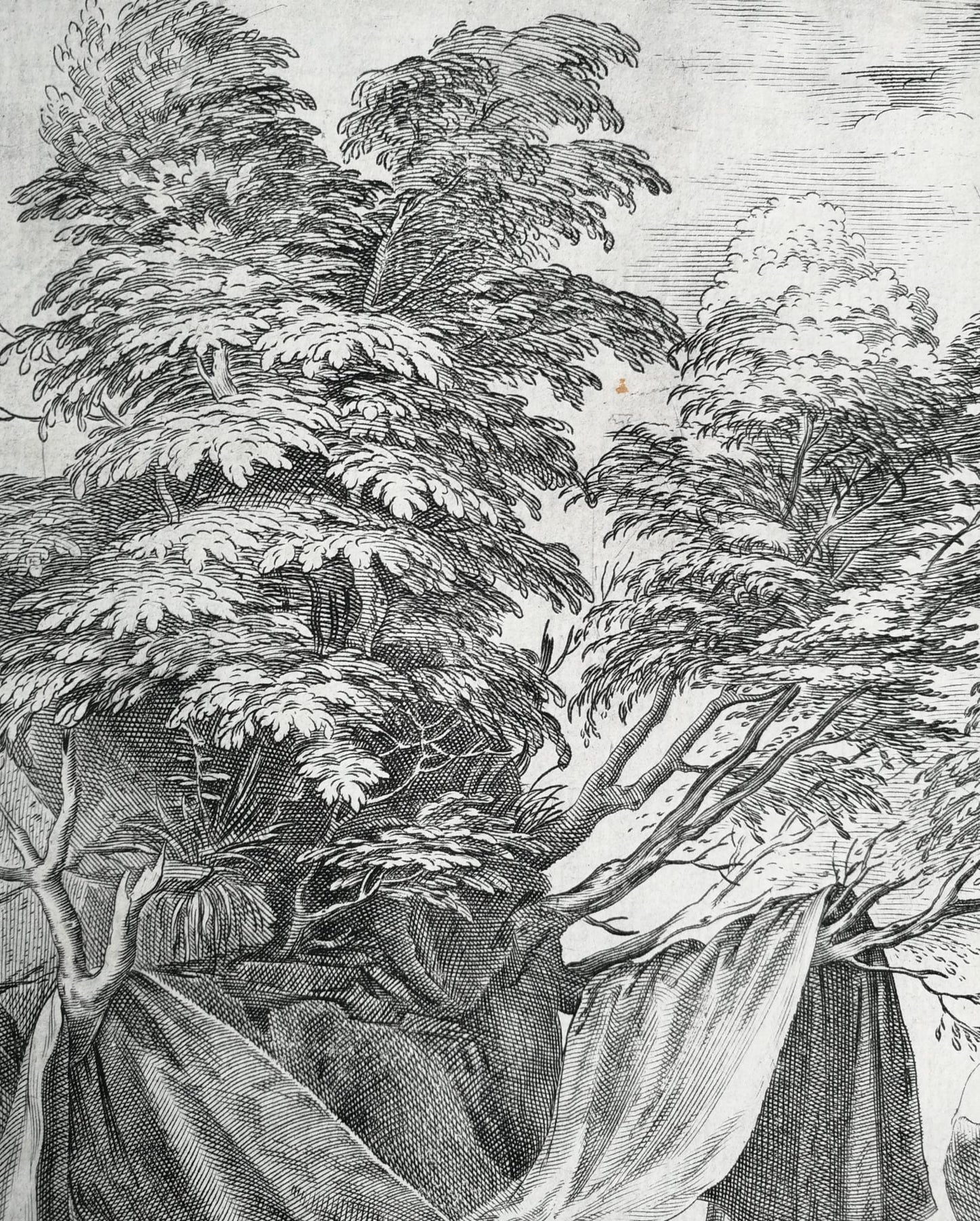
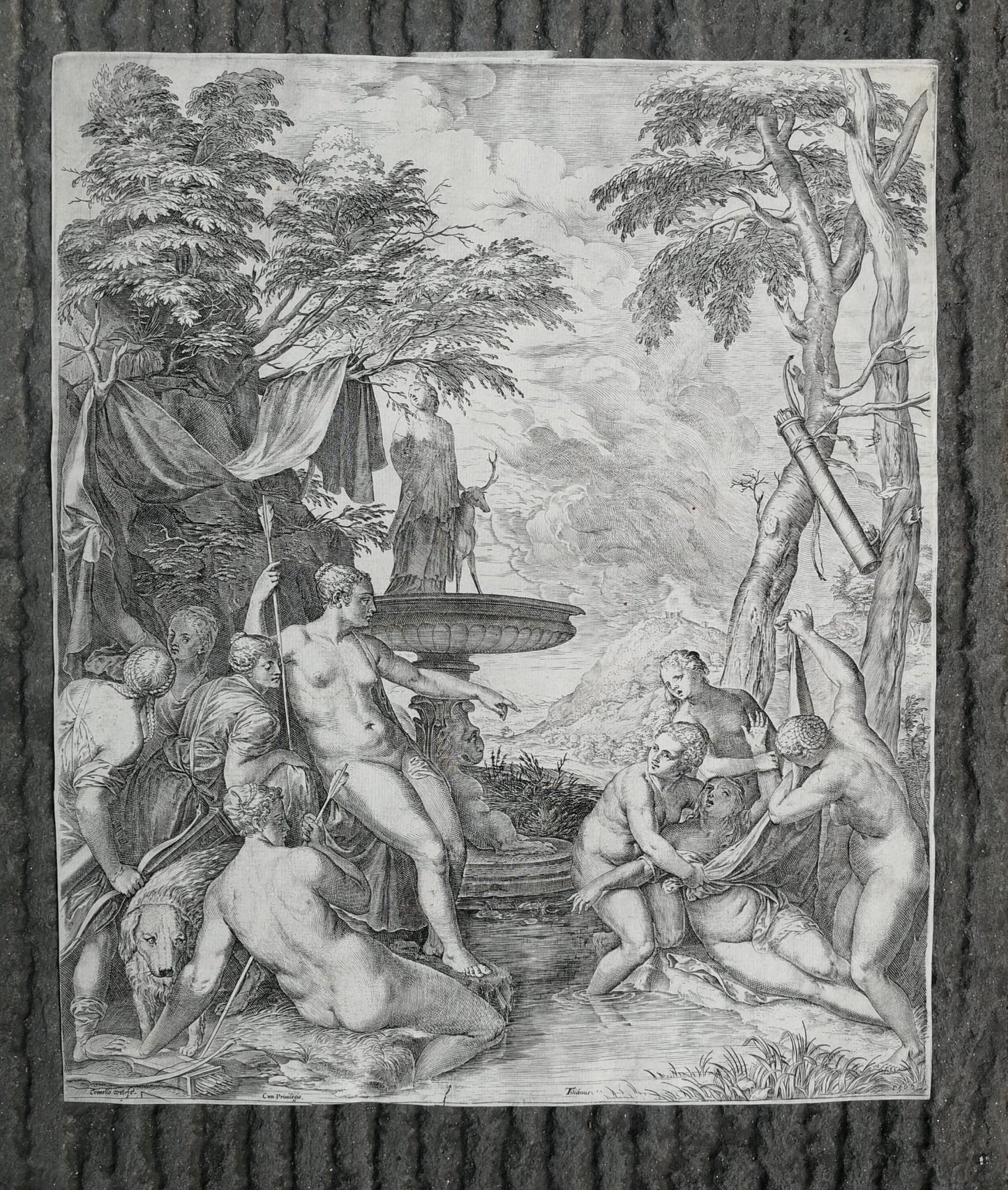
Image with text
Pair text with an image to focus on your chosen product, collection, or blog post. Add details on availability, style, or even provide a review.
